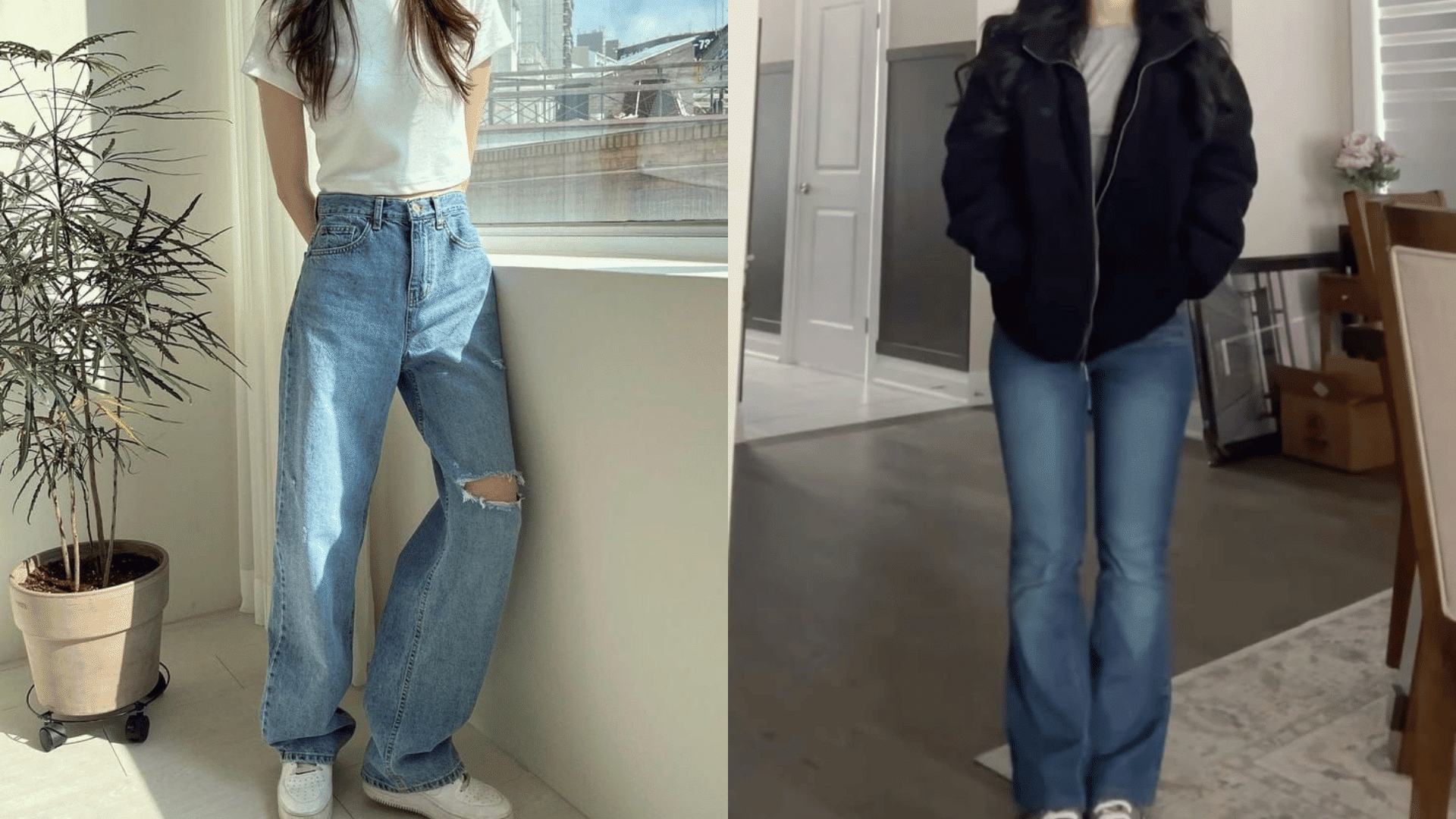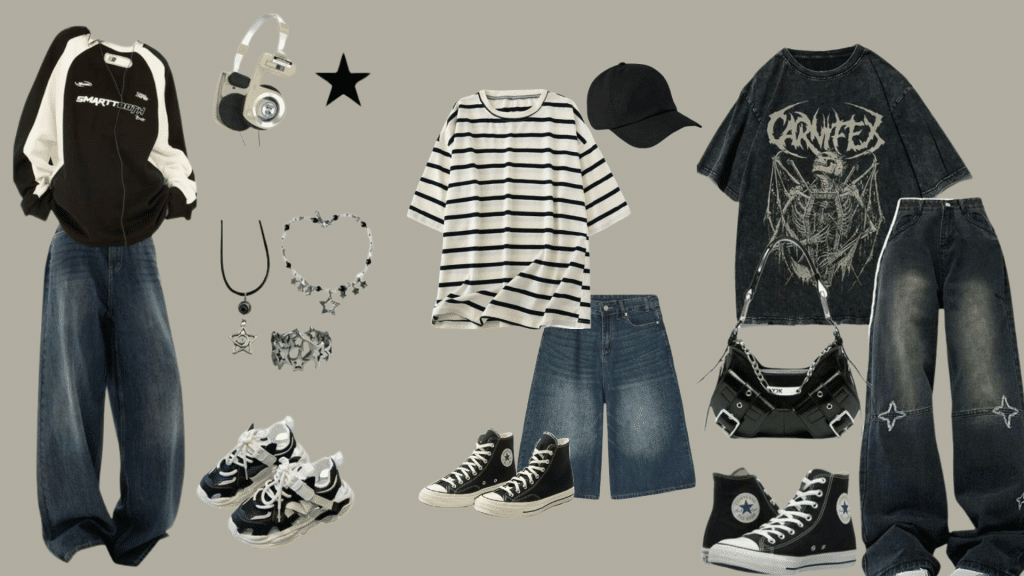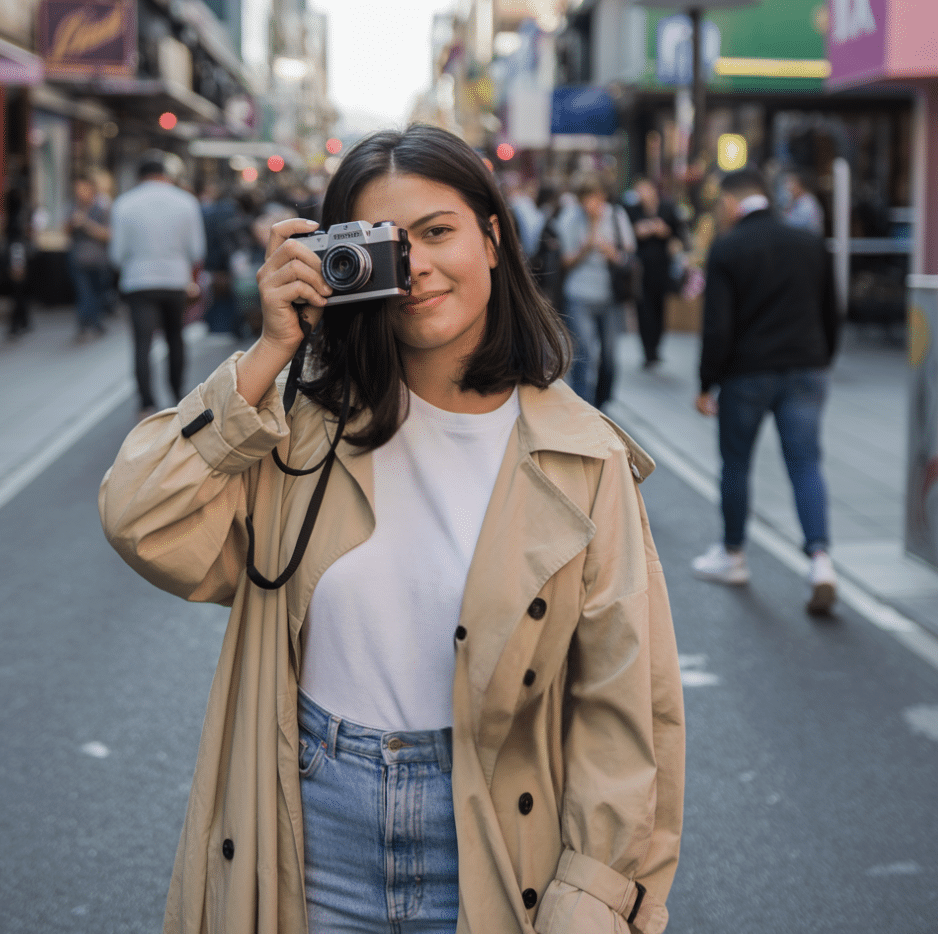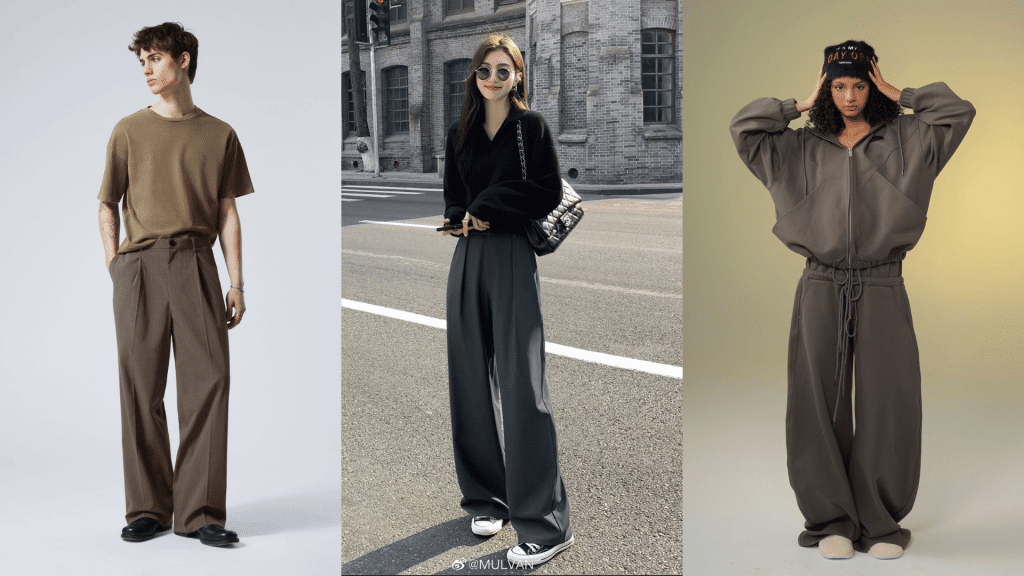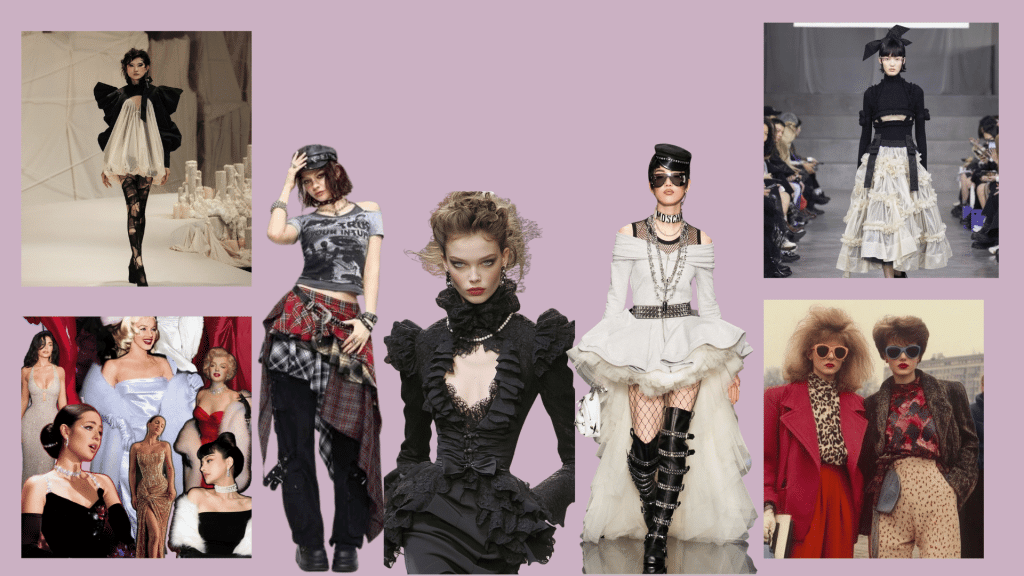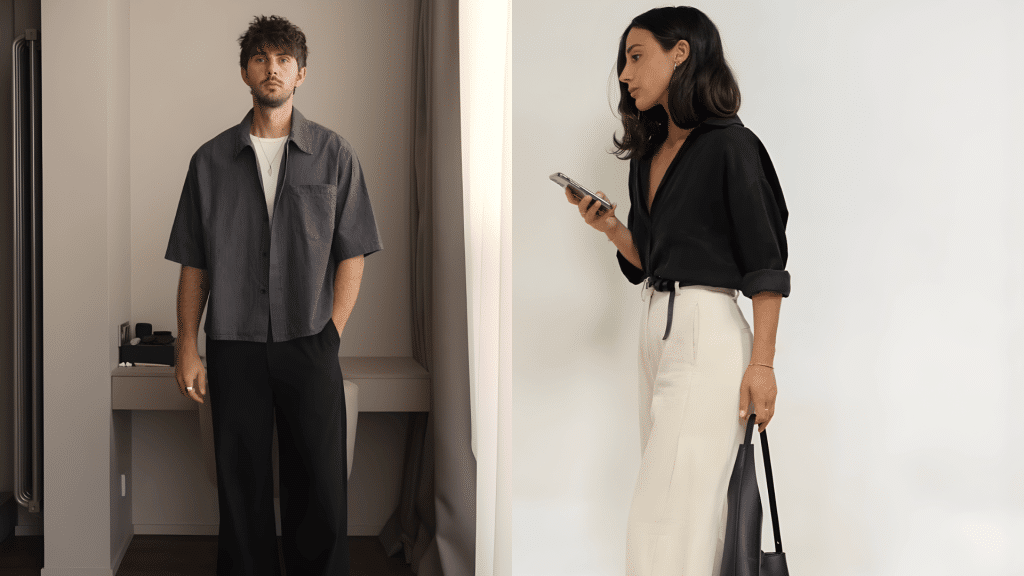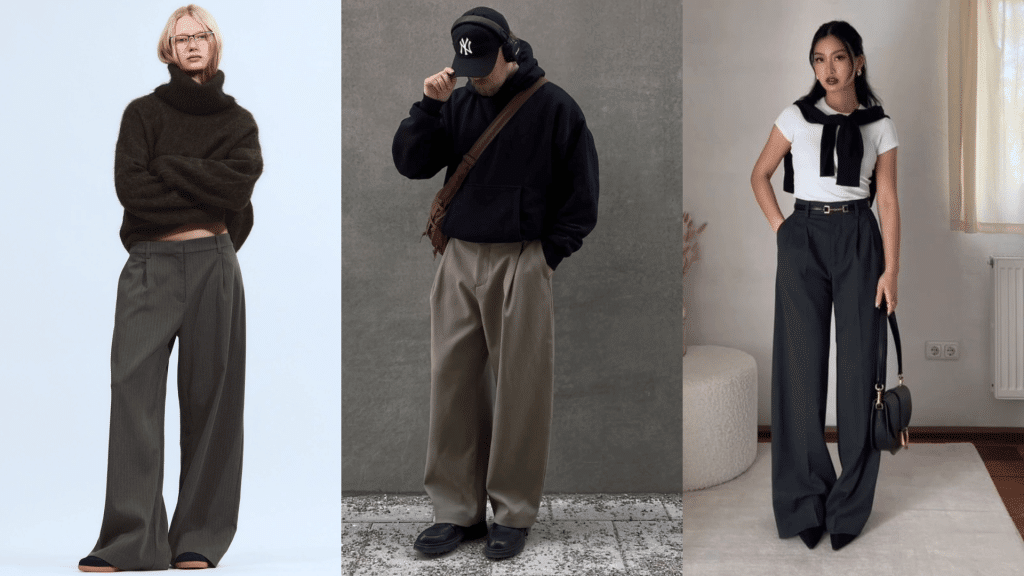Finding the perfect outfit becomes much easier when someone understands the various types of clothing styles available today.
Many people struggle to determine which fashion approach best suits their personality and lifestyle.
This guide will introduce various clothing styles, helping readers discover their ideal fashion direction and build a wardrobe that truly reflects their unique personality.
From classic style to bohemian freedom, this blog covers the most popular types of clothing styles, including casual, formal, vintage, and contemporary options.
What Defines Types of Clothing Styles?
A clothing style is how someone expresses their personality and taste through their wardrobe choices. It’s more than just throwing on random pieces; it’s about creating a matching look that reflects who you are.
Each style has distinct characteristics, such as specific colors, fabrics, patterns, and silhouettes, that make it recognizable.
For instance, minimalist styles favor neutral tones and clean lines, while boho styles cherish flowing fabrics and earthy patterns.
Understanding different types of clothing styles helps you identify what resonates with your lifestyle and preferences.
The strongest wardrobes maintain consistency while allowing room for personal interpretation. Regardless of whether you ten toward a specific aesthetic or blend multiple influences, your clothing style becomes your visual signature to the world.
Types of Clothing Styles: From Classic to Modern Trends
Types of clothing styles shape the way people express themselves and present their personality to the world.
Each type of Clothing style has its own unique story, ranging from casual comfort to bold statements that make a lasting impression.
By learning about various clothing styles, readers can gain a deeper understanding of how fashion styles impact daily life and personal identity.
1. Casual Style
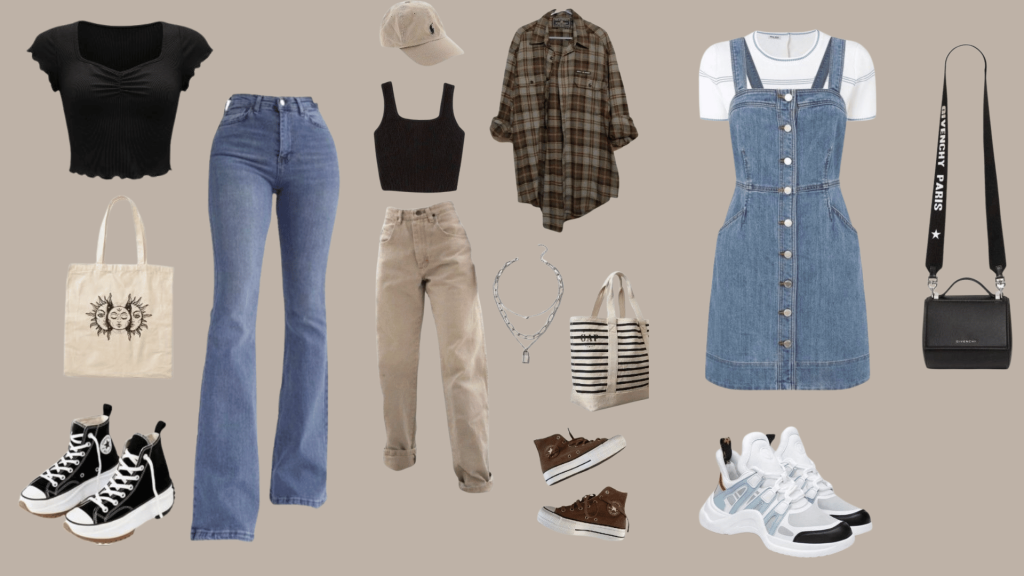
Casual style is one of the most common and easy-to-wear clothing styles. It focuses on comfort and practicality while maintaining a neat appearance.
This style works well for everyday situations, such as hanging out with friends, running errands, or relaxing at home. It’s simple, flexible, and can be dressed up or down depending on the occasion.
- Defining Features: Relaxed and comfortable clothing, easy layering, little to no formality
- Key Pieces: Jeans, T-shirts, hoodies, sneakers, denim jackets
- Silhouette and Fit: Straight cuts, regular fit, sometimes loose but not oversized
2. Smart Casual Style
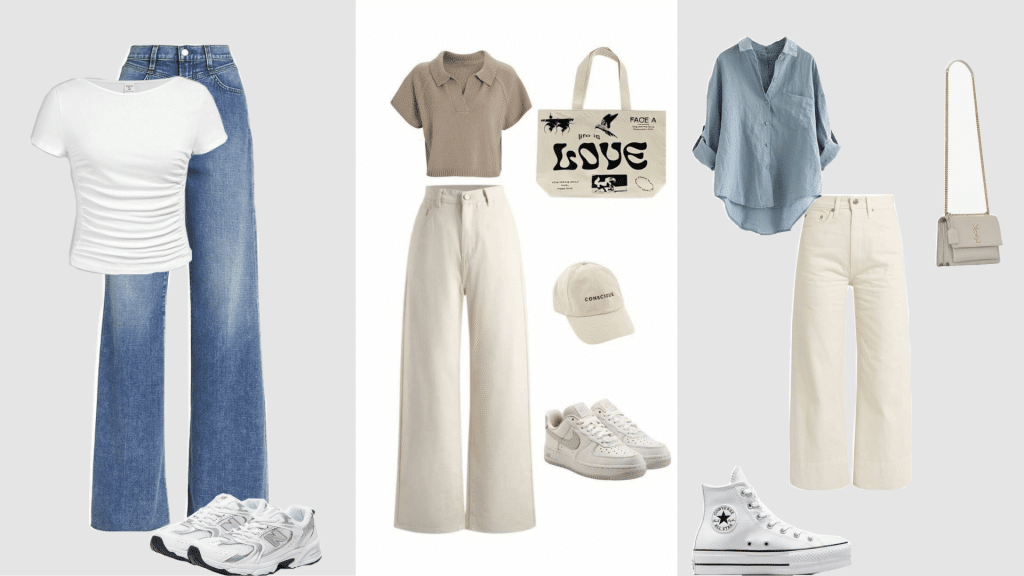
Smart casual style blends relaxed clothing with a polished look. It’s perfect for situations where one wants to look professional but not overly formal.
This style strikes a balance between comfort and sophistication, making it suitable for office Fridays, dinner outings, or social gatherings.
- Defining Features: A mix of casual basics with neat, structured pieces
- Key Pieces: Blazers, chinos, button-down shirts, loafers
- Silhouette and Fit: Clean lines with tailored fits, often slightly relaxed
3. Business Formal Style
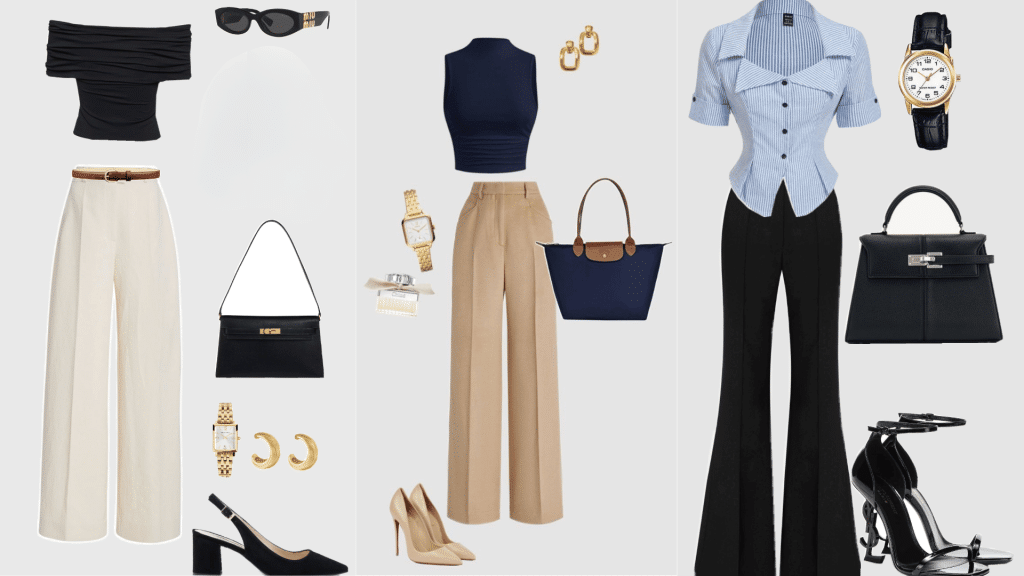
Business formal is the highest level of professional dressing. It communicates authority, respect, and style. This style is often worn in corporate settings, at official meetings, or at formal business events.
- Defining Features: Refined and highly structured outfits
- Key Pieces: Suits, ties, dress shirts, pencil skirts, dress shoes
- Silhouette and Fit: Sharp fitting, slim or straight cuts, fitted
4. Business Casual Style
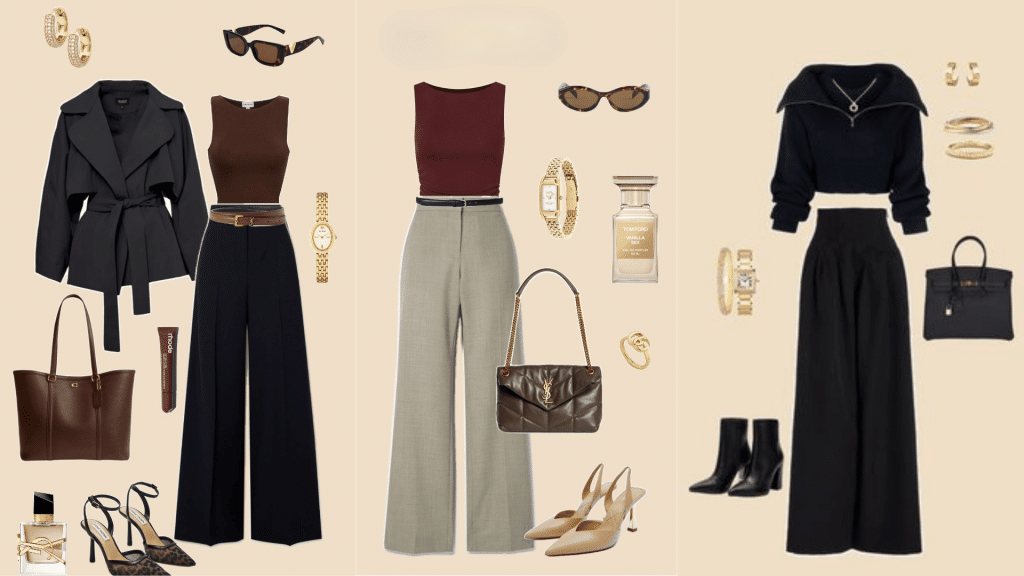
Business casual is a modern workplace staple. It maintains professionalism while allowing a bit of comfort and personal expression.
This style is widely seen in offices, networking events, and semi-formal gatherings.
- Defining Features: Professional yet relaxed, mixing dressy and casual items
- Key Pieces: Blouses, slacks, polos, cardigans, loafers
- Silhouette and Fit: Straight or semi-fitted, easy to move in, not overly tight
5. Minimalist Style
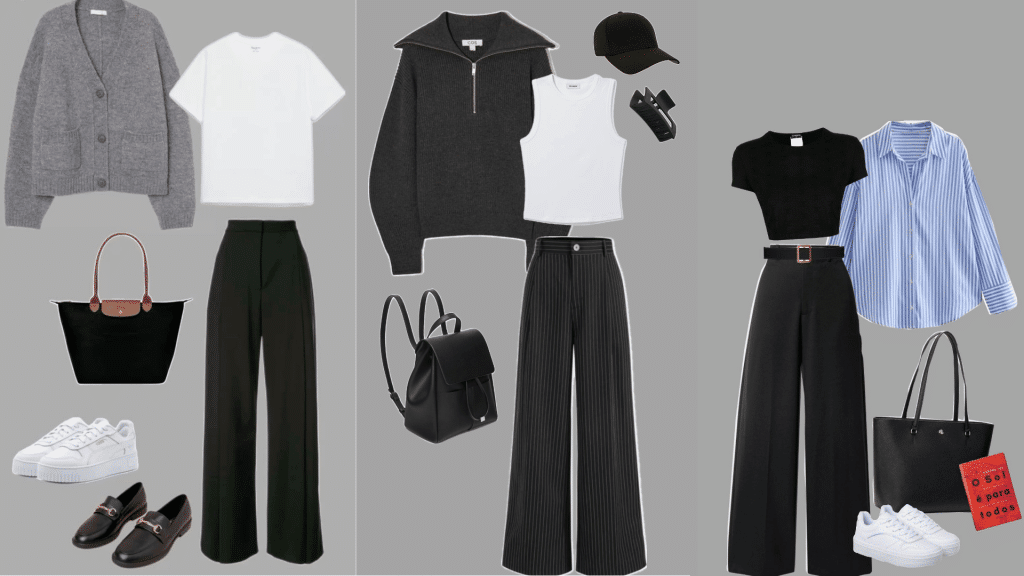
Minimalist style is built on the principle of “less is more.” It avoids cluttered looks, focusing on evergreen pieces, neutral shades, and simple cuts.
This style suits those who prefer a minimalist approach and a streamlined wardrobe.
- Defining Features: Neutral colors, simple designs, no extra details
- Key Pieces: White shirts, black trousers, solid coats, plain sneakers
- Silhouette and Fit: Streamlined, often straight or slightly fitted
6. Classic Style
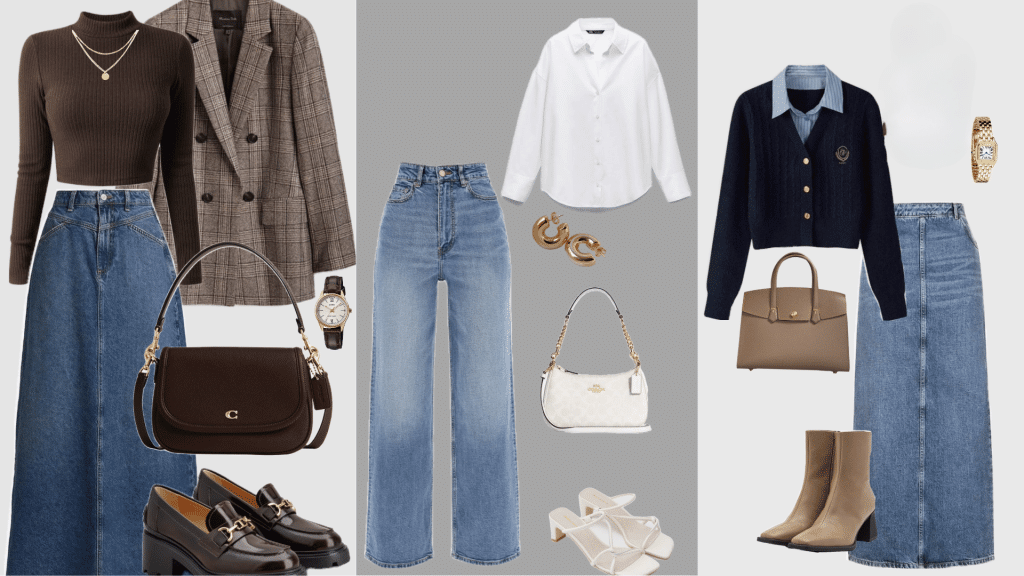
Classic style never goes out of fashion. It is reliable, Stylish, and diverse, working well across different occasions. This style emphasizes well-made clothing that looks appropriate year after year.
- Defining Features: Traditional, polished, and enduring appeal
- Key Pieces: Blazers, trench coats, button-down shirts, A-line skirts
- Silhouette and Fit: Balanced proportions, structured but not rigid
7. Preppy Style
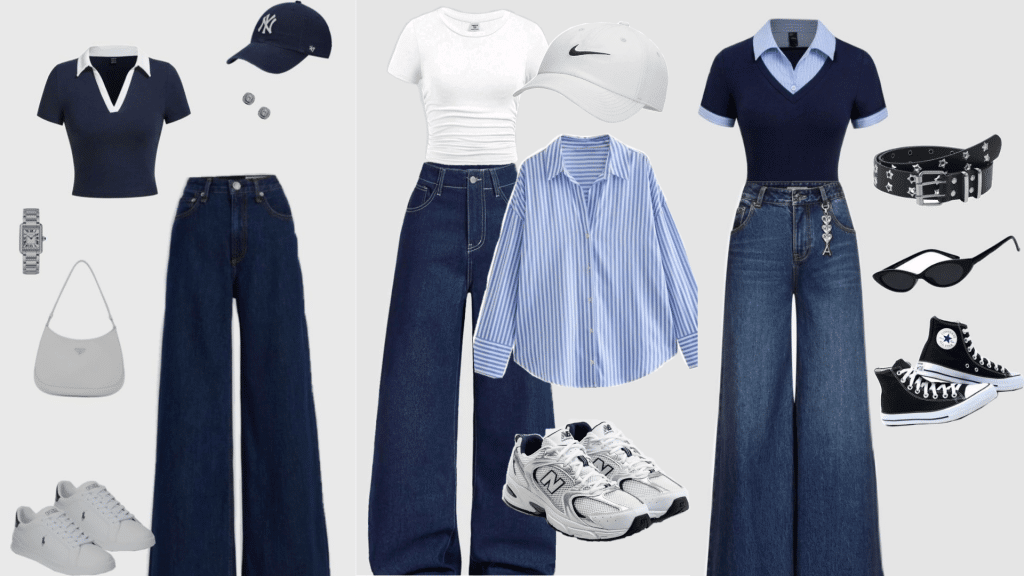
Preppy style draws inspiration from Ivy League fashion and the polished aesthetics of school uniforms. It is neat, youthful, and slightly formal but still approachable. This style is often associated with a clean, upper-class look.
- Defining Features: Neat, tidy, and polished with academic vibes
- Key Pieces: Polo shirts, blazers, pleated skirts, loafers, sweaters tied over shoulders
- Silhouette and Fit: Well-fitted, structured
8. Chic Style
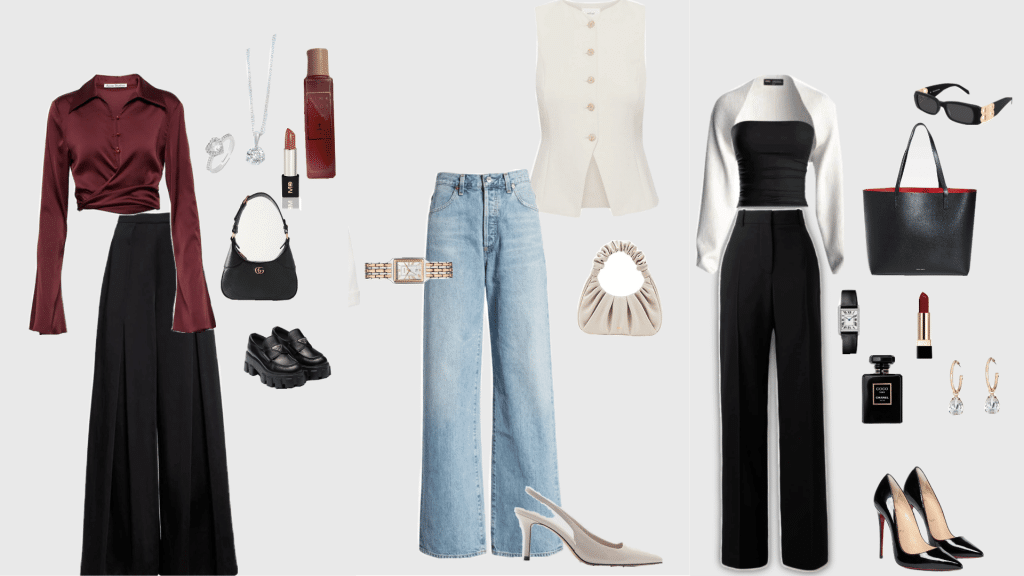
Chic style is all about style with a touch of sophistication. It mixes trendy and evergreen pieces to create a polished look that always feels fresh. Chic outfits are often sleek, stylish, and fashion-forward.
- Defining Features: Effortlessly stylish, modern, and Stylish
- Key Pieces: Fitted pants, silk blouses, fitted dresses, pointed heels
- Silhouette and Fit: Streamlined and figure-flattering with clean lines
9. Refined Formal Style
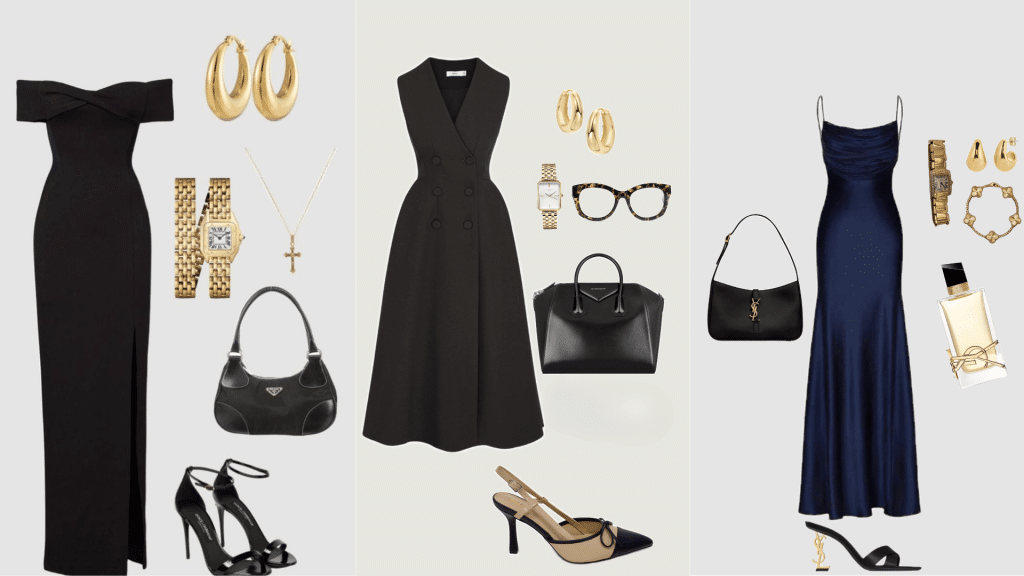
Stylish or formal style is reserved for special occasions, ceremonies, and events where glamour is key. It focuses on sophistication and presentation. This style showcases luxurious fabrics and elegant designs.
- Defining Features: Glamorous, refined, and occasion-focused
- Key Pieces: Gowns, tuxedos, cocktail dresses, heels, statement jewelry
- Silhouette and Fit: Flowing or fitted, emphasizing form and grace
10. Artsy Style
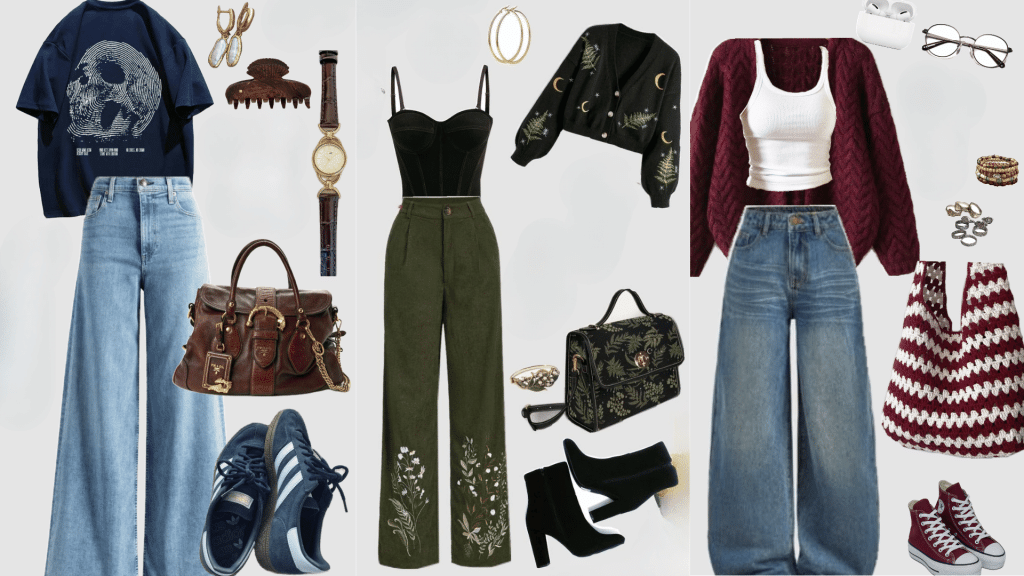
Artsy style is for people who love creativity and originality. It uses bold patterns, unique cuts, and expressive pieces that often stand out from the crowd. This style is more about self-expression than following fashion rules.
- Defining Features: Experimental, colorful, and individualistic
- Key Pieces: Abstract prints, layered outfits, handmade accessories
- Silhouette and Fit: Asymmetrical, loose, or exaggerated shapes
11. Streetwear Style
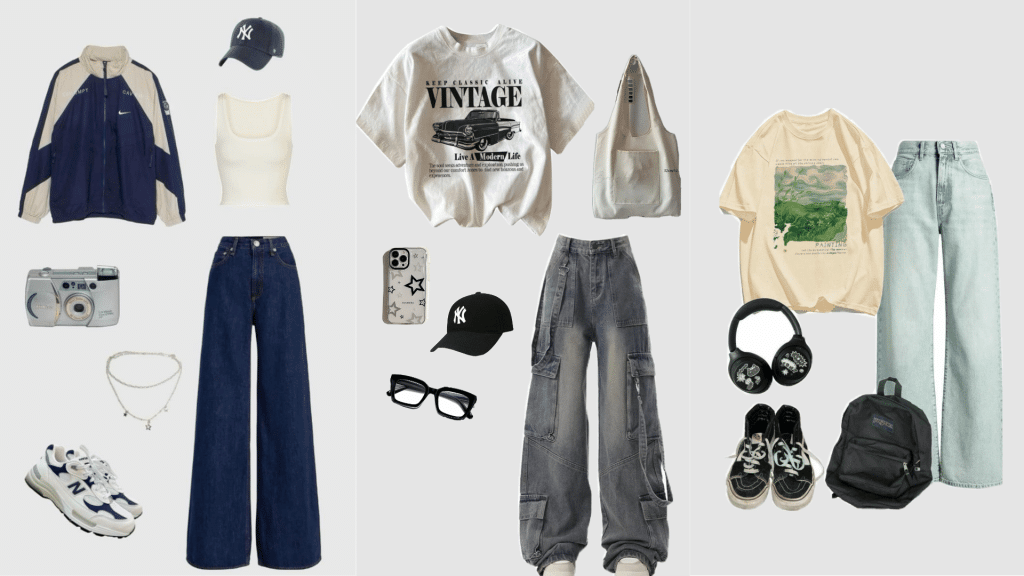
Streetwear is one of the most influential modern fashion movements. Originating from urban culture, it combines casual wear with bold, trendy items.
It’s comfortable, expressive, and highly connected to music and youth culture.
- Defining Features: Relaxed but trendy, often with logo-heavy items
- Key Pieces: Hoodies, sneakers, graphic T-shirts, cargo pants, snapbacks
- Silhouette and Fit: Oversized, relaxed, and sporty
12. Skater Style
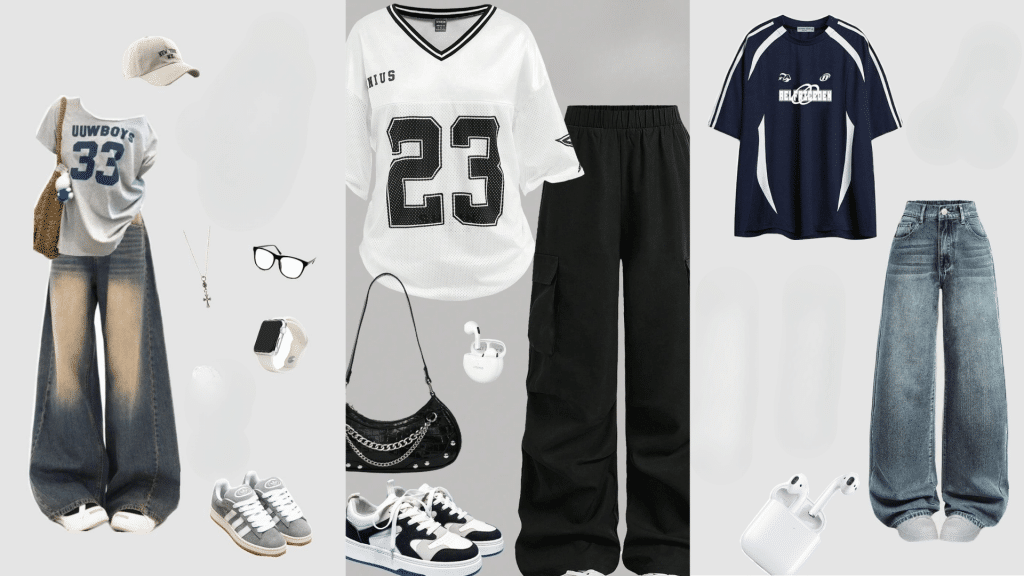
Skater style grew from skateboarding culture and has a laid-back, rebellious feel. It’s all about comfort and freedom of movement, with clothes that can handle an active lifestyle.
- Defining Features: Relaxed, sporty, and slightly edgy
- Key Pieces: Oversized tees, baggy jeans, skate shoes like Vans
- Silhouette and Fit: Loose and roomy, built for movement
13. Hip Hop Style
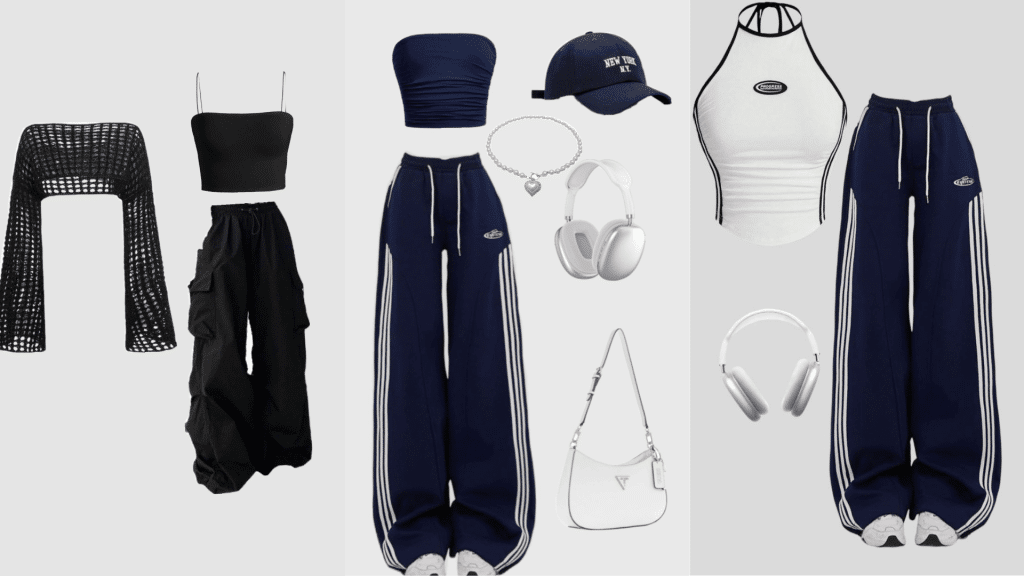
Hip hop style emerged from the music scene and represents confidence and boldness. It is expressive, flashy, and often influenced by street culture.
- Defining Features: Statement-making, oversized, and bold
- Key Pieces: Tracksuits, sneakers, gold chains, caps
- Silhouette and Fit: Baggy, layered, and relaxed
14. Y2K Style
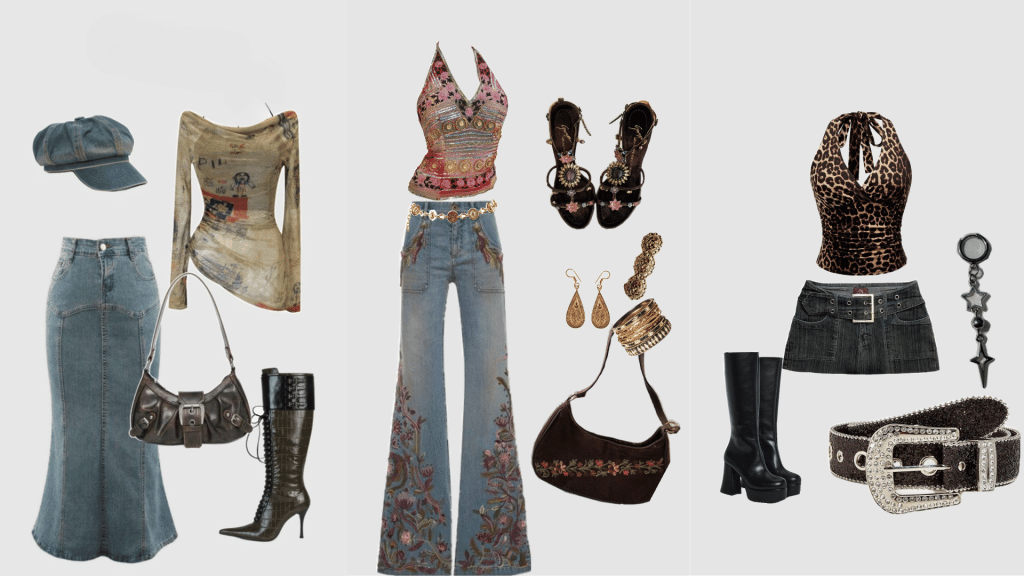
Y2K fashion reflects trends from the late 1990s to early 2000s. It’s playful, nostalgic, and often colorful with futuristic touches.
- Defining Features: Trend-driven, flashy, and nostalgic
- Key Pieces: Crop tops, mini skirts, low-rise jeans, shiny fabrics
- Silhouette and Fit: Fitted on top, often paired with loose bottoms
15. Grunge Style with Modern Twist
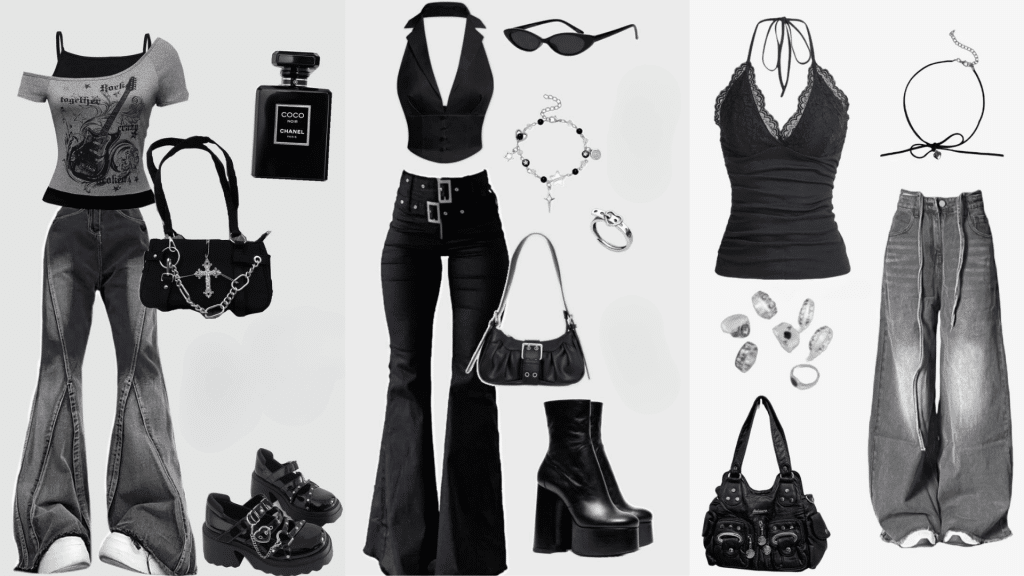
Grunge style came from the 1990s rock music scene, favoring comfort over polish and rejecting mainstream fashion trends.
It’s deliberately messy, rugged, and carefree, with an “undone” aesthetic that looks effortlessly thrown together.
- Defining Features: Unpolished and anti-fashion
- Key Pieces: Flannel shirts, ripped jeans, band tees, and combat boots
- Silhouette and Fit: Loose, layered, and relaxed
16. Punk Style
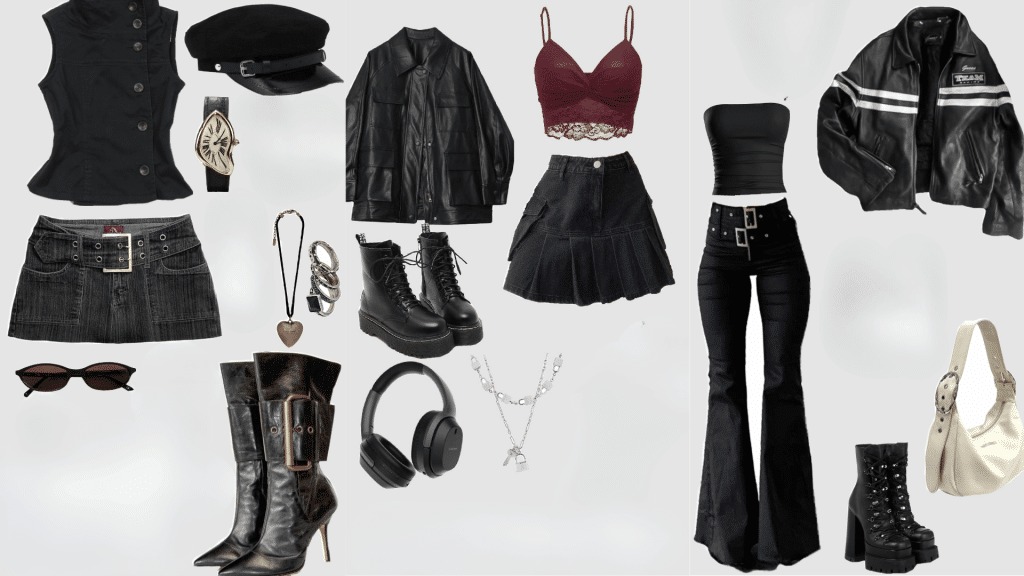
Punk fashion grew from the punk rock movement as a symbol of rebellion against mainstream society and conventional fashion rules.
It’s intentionally edgy, bold, and anti-establishment, using shocking elements to make political and social statements.
- Defining Features: Rebellious, tough, and DIY-inspired
- Key Pieces: Leather jackets, studded belts, ripped clothing, band patches
- Silhouette and Fit: Slim or tight with sharp edges
17. Workout Wear Style
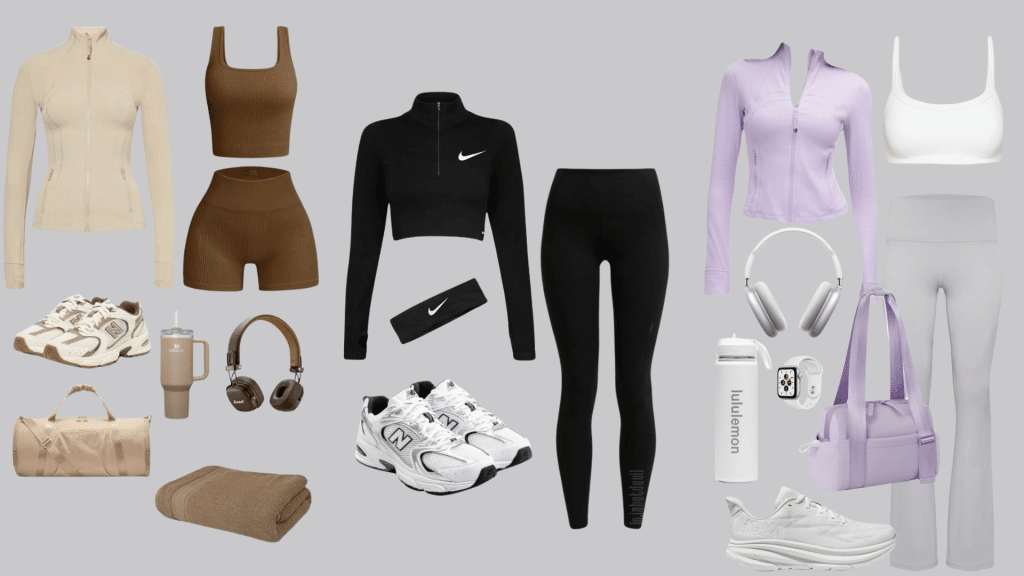
Workout wear is designed for exercise and training. It focuses on breathable fabrics, flexibility, and durability to support physical activity.
This style is also worn casually outside the gym thanks to its comfort.
- Defining Features: Functional, breathable, and fitness-driven
- Key Pieces: Leggings, sports bras, tank tops, gym shorts
- Silhouette and Fit: Fitted and flexible for maximum movement
18. Goth Style
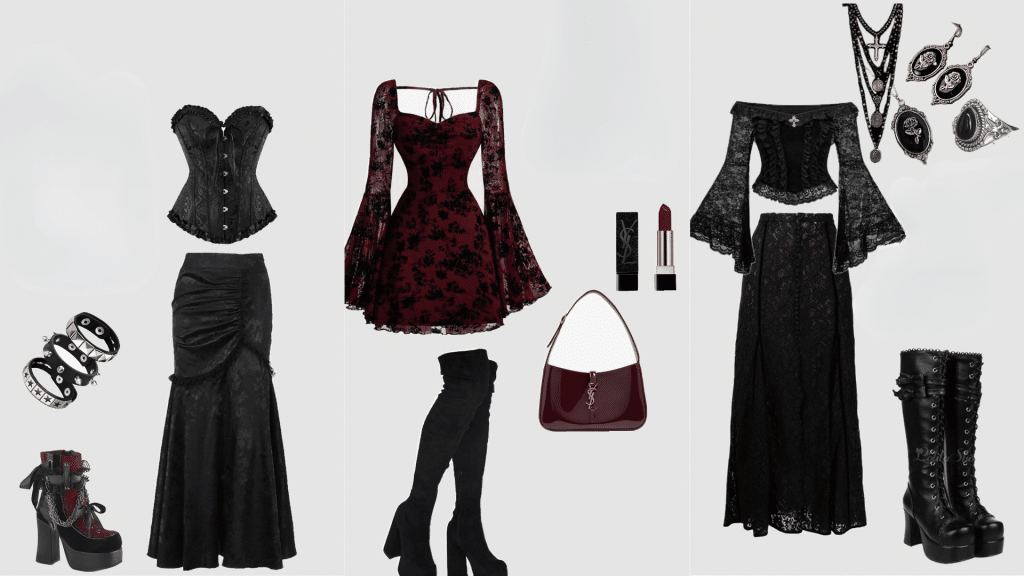
Goth style is dramatic and mysterious, influenced by dark romanticism and the fashion of the Victorian era.
It often features deep colors, such as black and burgundy, paired with elaborate details like lace, velvet, and ornate accessories.
- Defining Features: Dark, dramatic, and theatrical
- Key Pieces: Black dresses, lace, corsets, boots, and silver jewelry
- Silhouette and Fit: Flowing or structured, often emphasizing contrast
19. Scene Style
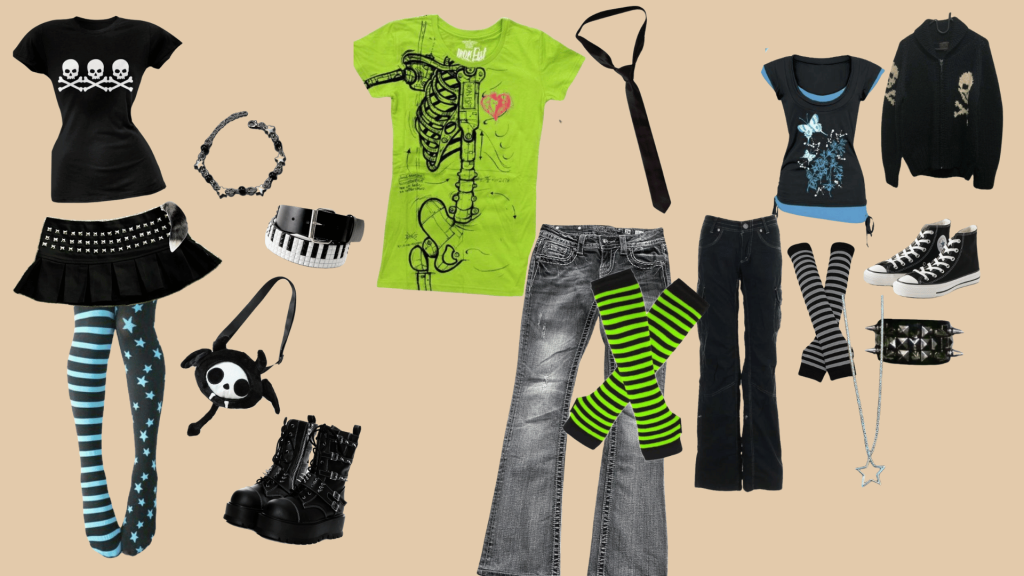
Scene fashion is characterized by its colorful, bold, and playful nature, often blending punk and emo influences. It was popular in the 2000s youth culture.
- Defining Features: Bright, flashy, and attention-grabbing
- Key Pieces: Neon clothes, graphic tees, skinny jeans, colorful hair
- Silhouette and Fit: Slim with bold layering
20. Raver Style
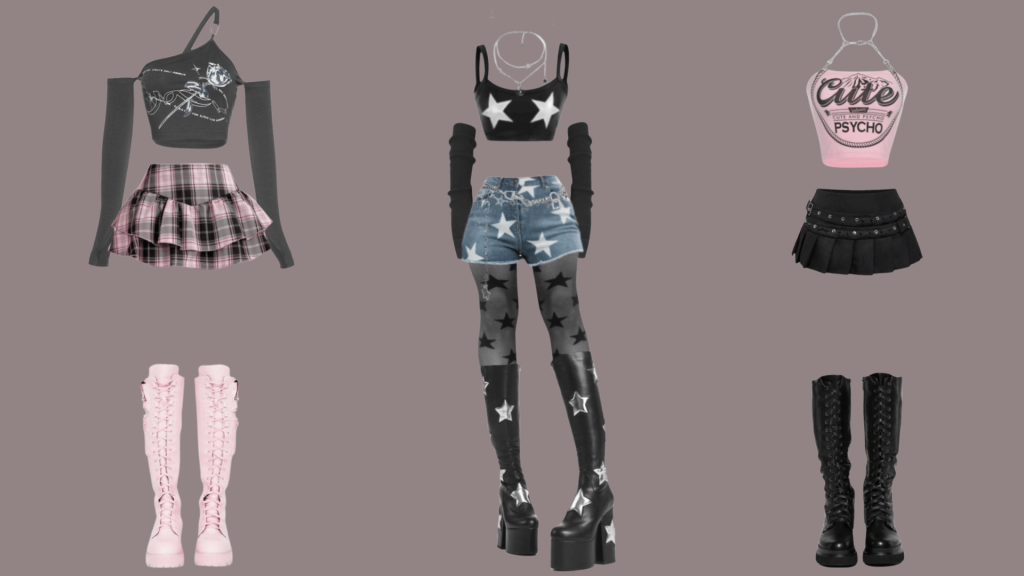
Raver fashion is closely associated with electronic dance music and festivals, designed to stand out under neon lights and strobing effects.
It’s energetic, bright, and fun, often incorporating glow-in-the-dark elements and bold neon colors. This style prioritizes dance comfort and makes an unignorable statement on the dance floor.
- Defining Features: Bright, neon, and futuristic
- Key Pieces: Glow sticks, baggy pants, crop tops, kandi bracelets
- Silhouette and Fit: Loose and breathable, often paired with fitted tops
21. Bohemian (Boho) Style
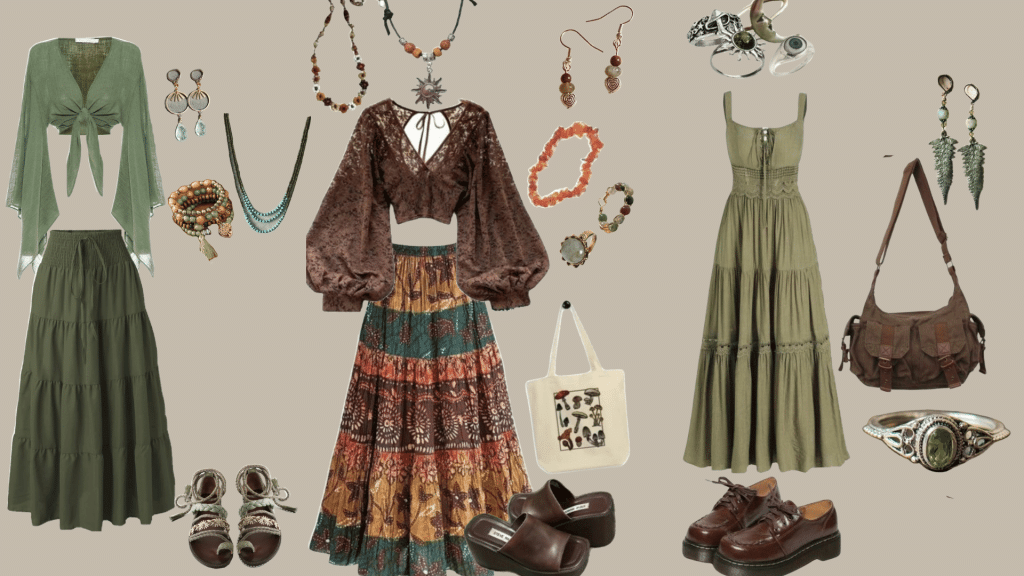
Bohemian style is characterized by a relaxed, natural, and artsy aesthetic, inspired by a free-spirited lifestyle. It’s often colorful with ethnic and vintage influences.
- Defining Features: Carefree, layered, and earthy
- Key Pieces: Maxi dresses, fringed vests, wide-brim hats, sandals
- Silhouette and Fit: Loose, flowing, and layered
22. Cottagecore Style
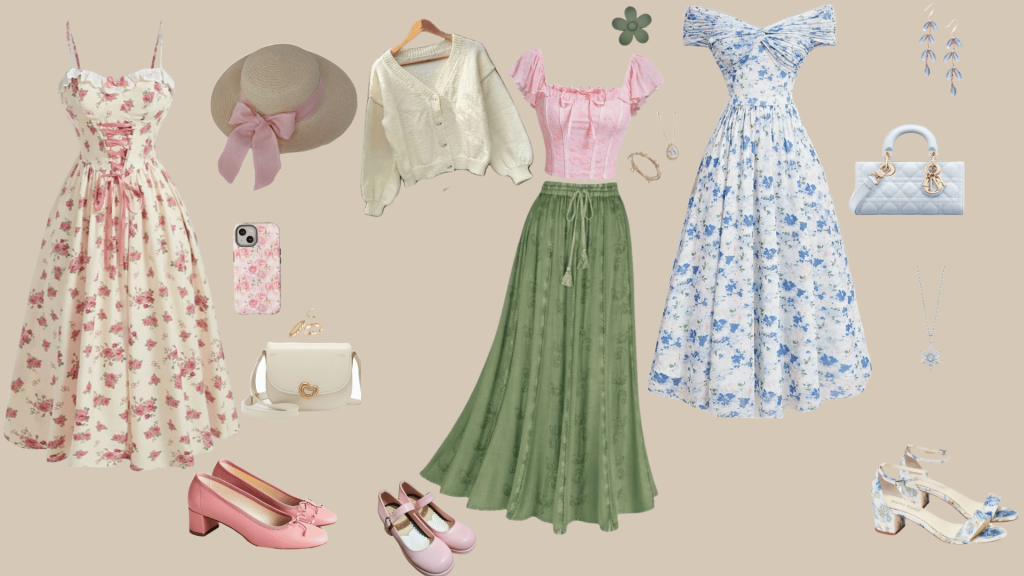
Cottagecore celebrates a romanticized rural life. It originates from nature, countryside living, and vintage charm. This style is characterized by a soft, dreamy quality and a simplicity that is often associated with a slow-paced lifestyle.
- Defining Features: Nature-inspired, gentle, and rustic.
- Key Pieces: Flowery dresses, aprons, straw hats, knit cardigans.
- Silhouette and Fit: Loose, flowing, and feminine.
23. Fairycore Style
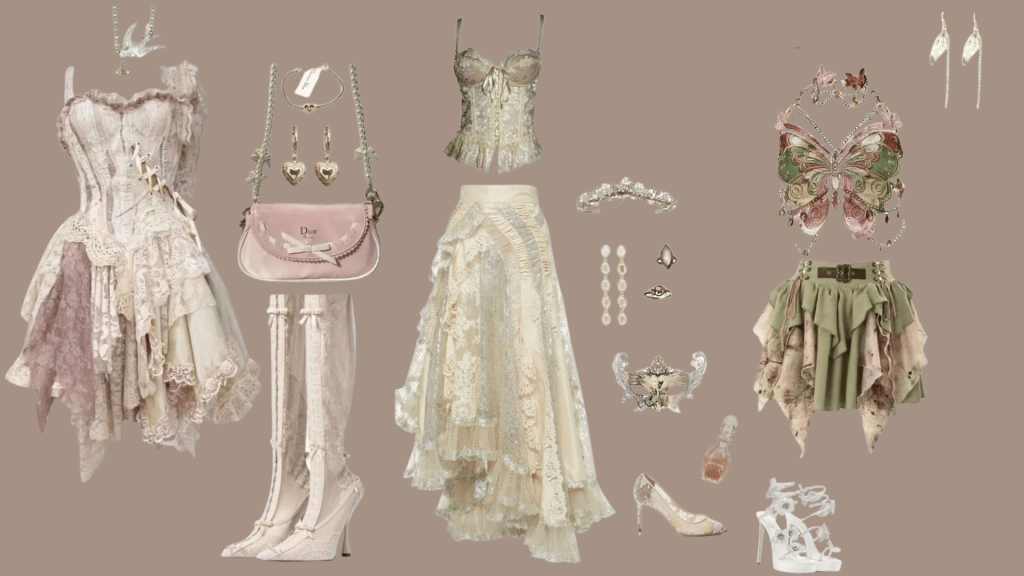
Fairycore takes inspiration from fantasy and folklore. It focuses on whimsical clothing that looks magical and otherworldly.
This style often features light fabrics, pastels, and details that evoke a sense of attraction.
- Defining Features: Dreamy, magical, and heavenly
- Key Pieces: Sheer dresses, wings, floral crowns, glitter accents
- Silhouette and Fit: Soft, subtle, and flowing
24. Vintage Style
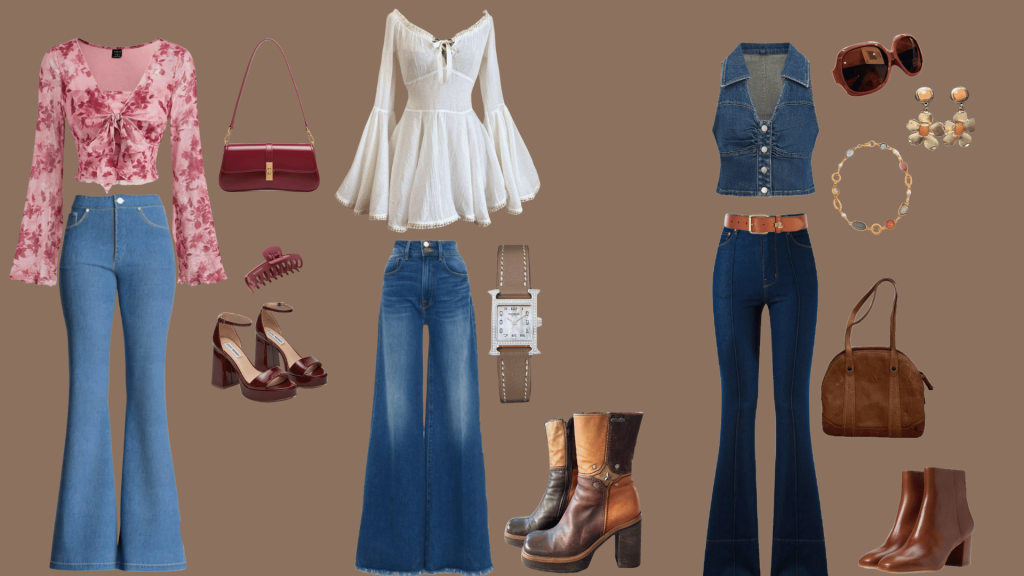
Vintage style features original pieces from past decades. It reflects clothing trends that are at least 20 years old. This style is about preserving history while maintaining a fashionable look.
- Defining Features: original and historically accurate
- Key Pieces: ’50s swing dresses, ’70s bell-bottoms, ’90s denim jackets
- Silhouette and Fit: Varies by era, structured to be loose
25. Retro Style
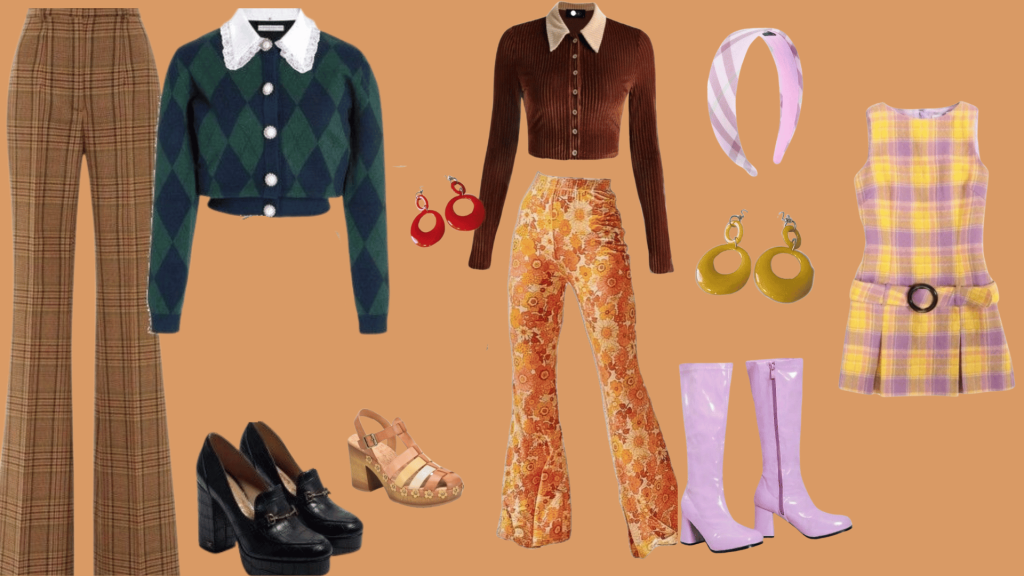
Retro style imitates past fashions but with a modern twist. Unlike vintage, it uses new clothes designed to look old. It’s playful, nostalgic, and often bold in color or print.
- Defining Features: Inspired by old trends but made new
- Key Pieces: Polka-dot dresses, disco pants, oversized sunglasses
- Silhouette and Fit: Typically bold and exaggerated
26. Pin-Up Style
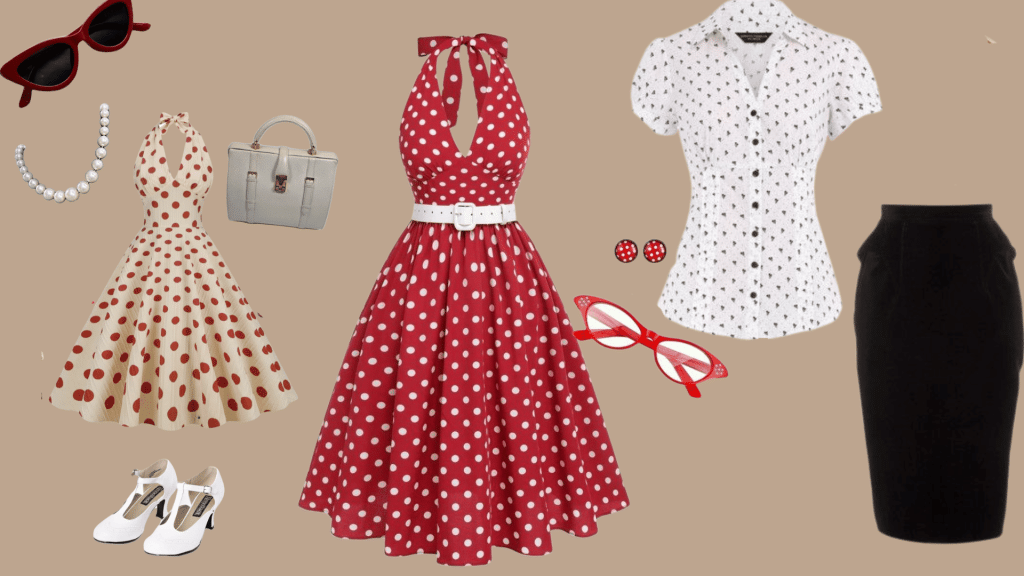
Pin-up fashion originated in the 1940s and 1950s, characterized by a distinctly feminine style. It highlights curves and playful glamour. This style is fun, flirty, and full of retro charm.
- Defining Features: Glamorous, feminine, and cheeky
- Key Pieces: High-waisted shorts, halter tops, pencil skirts, red lipstick
- Silhouette and Fit: Fitted, curvy, and structured
27. Romantic Style
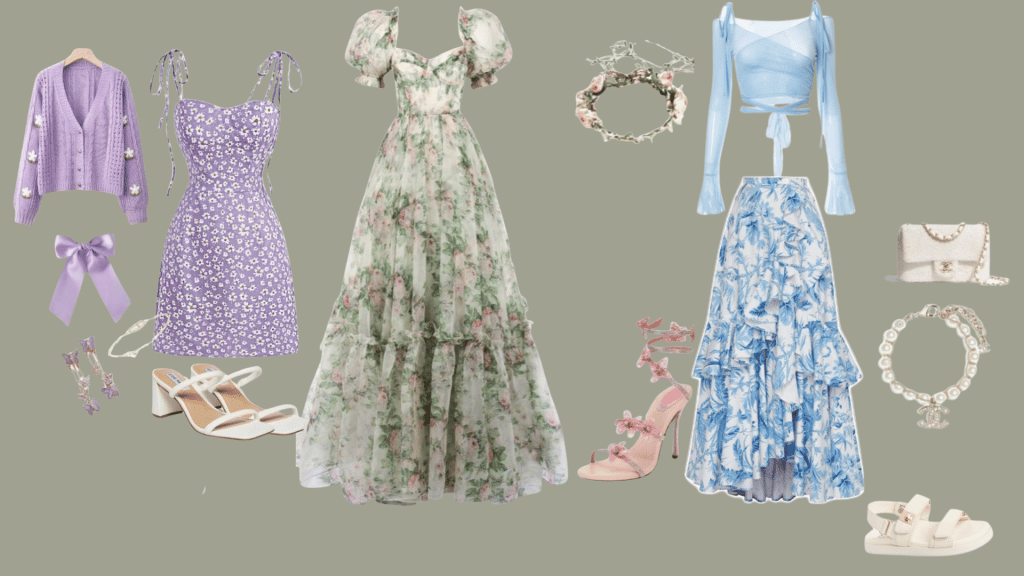
The Romantic style features soft fabrics and delicate details. It gives off a dreamy, Stylish feel that emphasizes grace. This style is often associated with femininity and an evergreen charm.
- Defining Features: Delicate, graceful, and Stylish
- Key Pieces: Lace blouses, ruffled skirts, pastel dresses, pearl jewelry
- Silhouette and Fit: Soft, flowing, and lightly fitted
28. Lolita Style
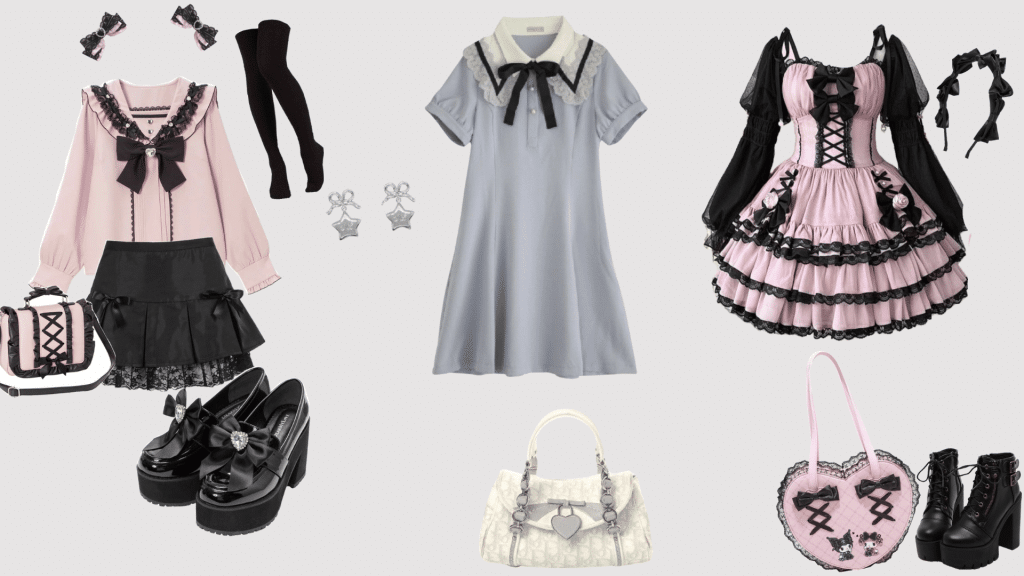
Lolita fashion originated in Japan and is inspired by Victorian and Rococo styles of clothing. It emphasizes modesty, femininity, and doll-like charm. This style is detailed, layered, and highly expressive.
- Defining Features: Doll-like, frilly, and elaborate
- Key Pieces: Puffy skirts, lace blouses, knee socks, parasols
- Silhouette and Fit: Voluminous skirts with fitted tops
29. Kawaii Style
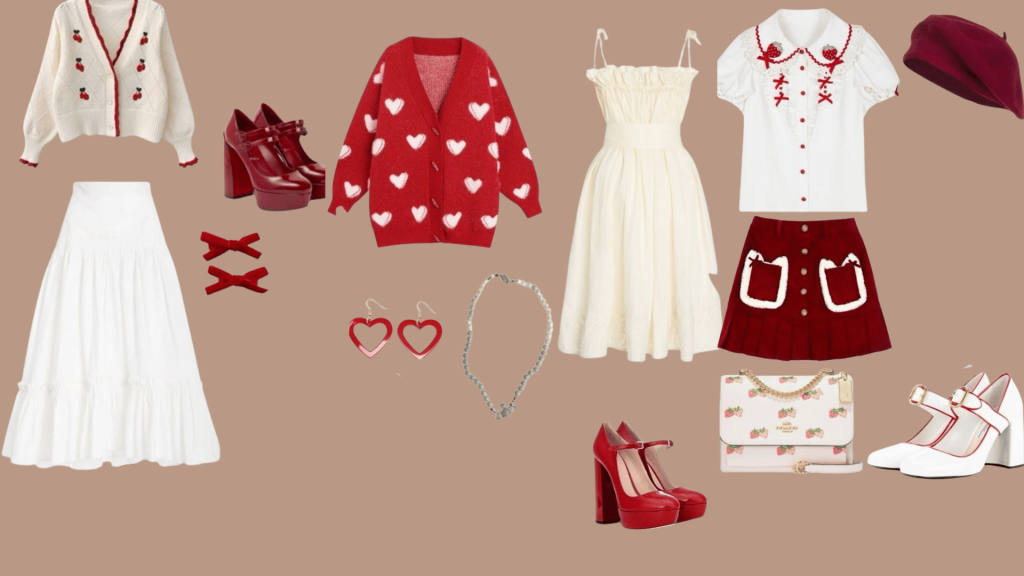
Kawaii means “cute” in Japanese, and this style celebrates cuteness in clothing. It uses soft colors, playful designs, and youthful accessories. The goal is to look sweet, fun, and approachable.
- Defining Features: Cute, colorful, and playful
- Key Pieces: Pastel skirts, cartoon-print tops, bows, plush bags
- Silhouette and Fit: Soft and youthful, often oversized tops with short skirts
30. Balletcore Style
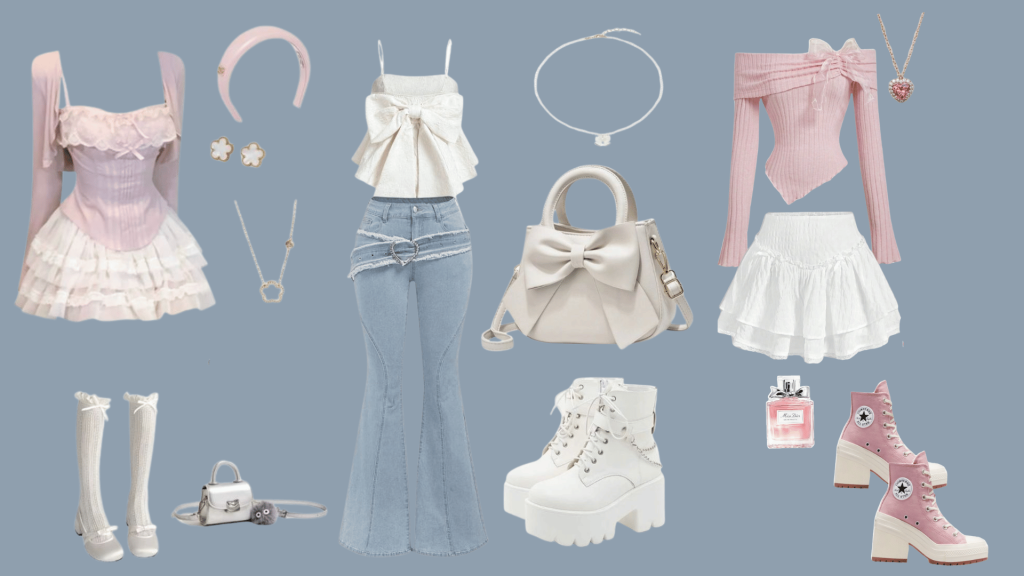
Balletcore is inspired by the practice wear of ballet dancers. It combines style with casual comfort, incorporating dance elements into everyday outfits. It’s graceful yet wearable in everyday life.
- Defining Features: Dance-inspired, soft, and feminine
- Key Pieces: Wrap tops, ballet flats, tulle skirts, leg warmers
- Silhouette and Fit: Slim and subtle with flowing layers
31. Androgynous Style
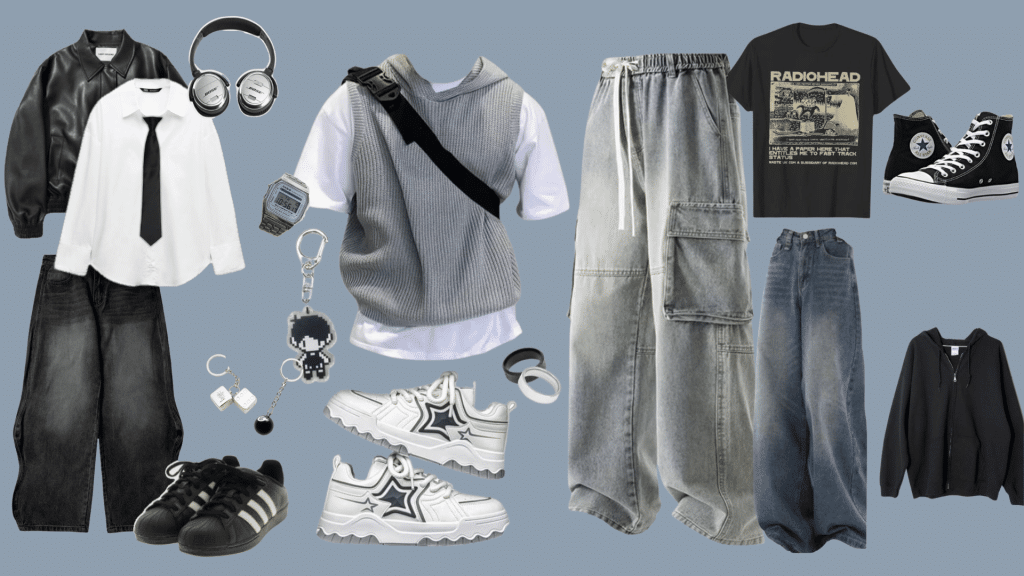
Androgynous fashion blurs the lines between male and female clothing. It focuses on neutral designs that can be used by anyone. This style is modern, bold, and challenges traditional norms.
- Defining Features: Gender-neutral, diverse, and modern
- Key Pieces: Blazers, trousers, button-downs, unisex shoes
- Silhouette and Fit: Straight, balanced, and minimal
32. Tomboy Style
Tomboy style rejects traditional feminine dressing in favor of practical, boyish clothing. It is comfortable, laid-back, and minimal, often mixing casual menswear with everyday basics.
Many people use this style to show confidence and ease.
- Defining Features: Practical, boyish, and straightforward
- Key Pieces: Loose jeans, T-shirts, sneakers, button-downs
- Silhouette and Fit: Relaxed, slightly oversized, minimal shaping
33. Rock Style
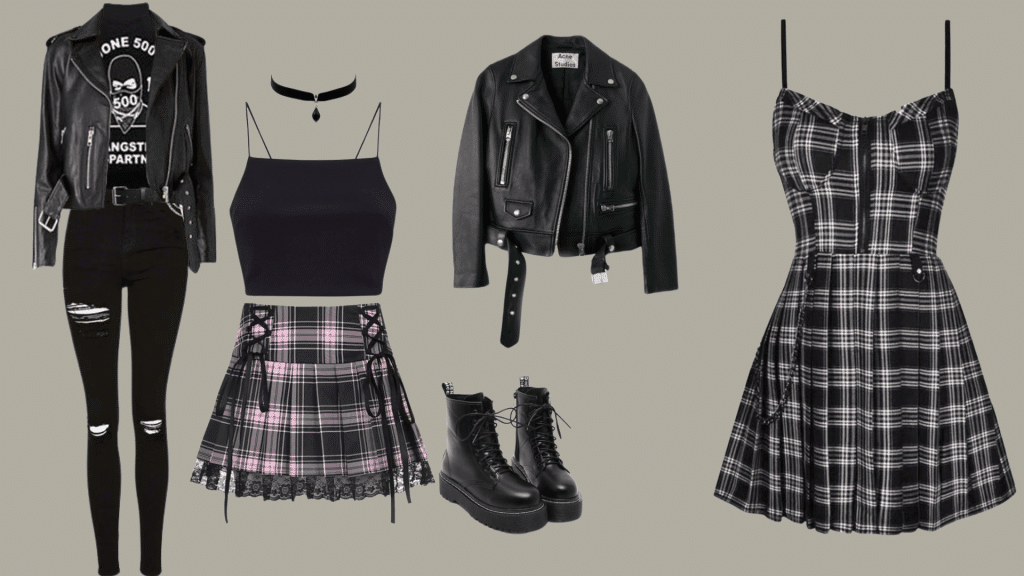
Rock style is tied to the music scene and exudes boldness and attitude. It often combines leather, denim, and statement accessories. This style reflects rebellion and a love for edgy culture.
- Defining Features: Tough, edgy, and music-inspired
- Key Pieces: Leather jackets, ripped jeans, graphic band tees, boots
- Silhouette and Fit: Slim with sharp, structured layers
34. Metalhead Style
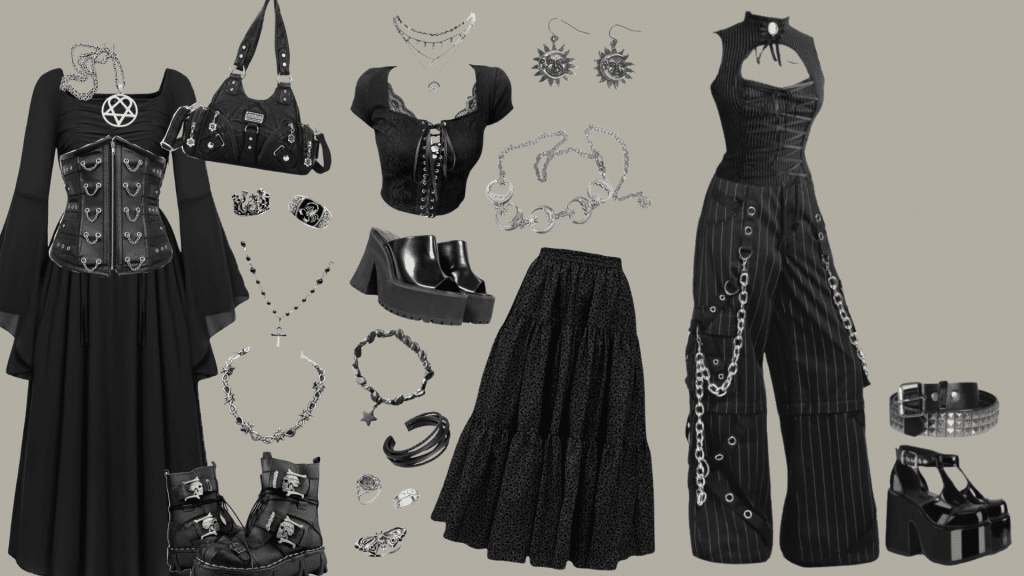
Metalhead fashion comes from heavy metal culture. It is dark, bold, and expressive of musical identity. The style is original and powerful, reflecting the genre’s intensity.
- Defining Features: Dark, aggressive, and music-driven
- Key Pieces: Black band tees, studded belts, heavy boots, leather pants
- Silhouette and Fit: Fitted tops with relaxed or slim bottoms
35. Cyberpunk Style
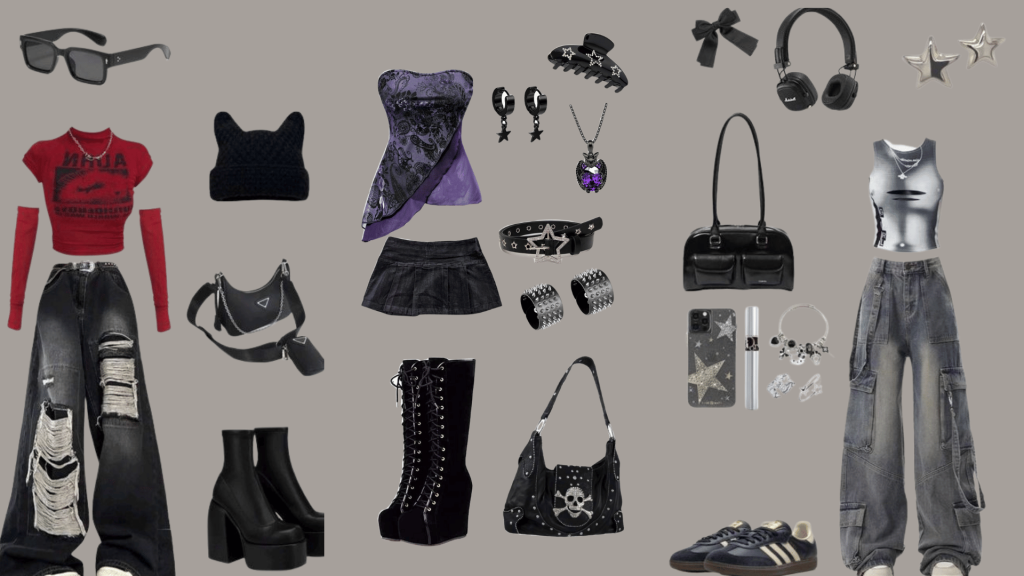
Cyberpunk is a futuristic and gritty genre, influenced by sci-fi culture. It mixes dark colors with neon highlights and metallic elements. The style shows rebellion against a high-tech world.
- Defining Features: Futuristic, edgy, and neon-accented
- Key Pieces: Leather coats, neon accents, goggles, metallic fabrics
- Silhouette and Fit: Slim with bold, layered outerwear
36. Steampunk Style
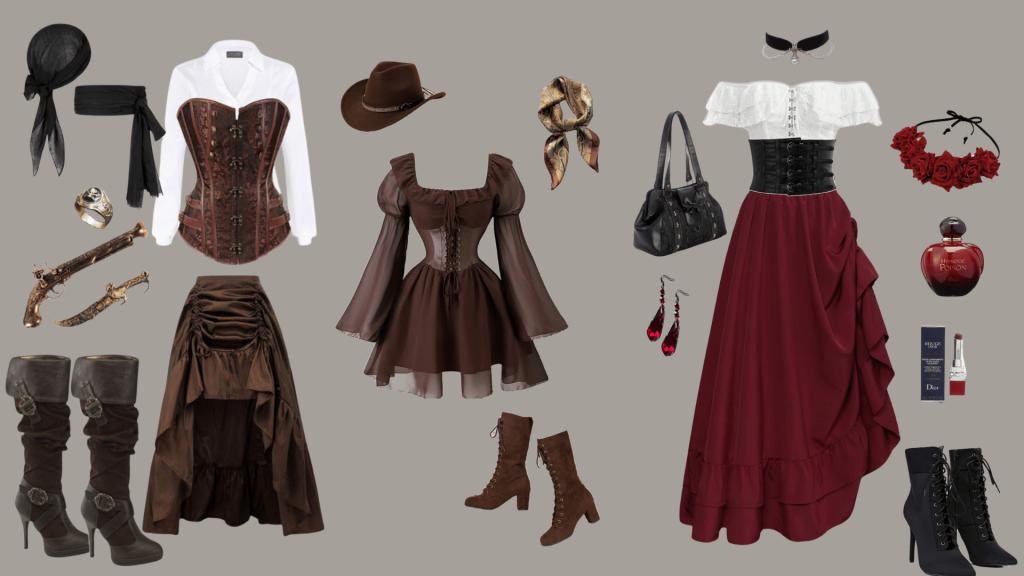
Steampunk combines Victorian fashion with industrial details. It feels vintage yet mechanical, mixing style with machinery-inspired accessories. The look is imaginative and theatrical.
- Defining Features: Victorian-inspired with mechanical details
- Key Pieces: Corsets, waistcoats, goggles, lace-up boots
- Silhouette and Fit: Structured with layered garments
37. Avant-Garde Style
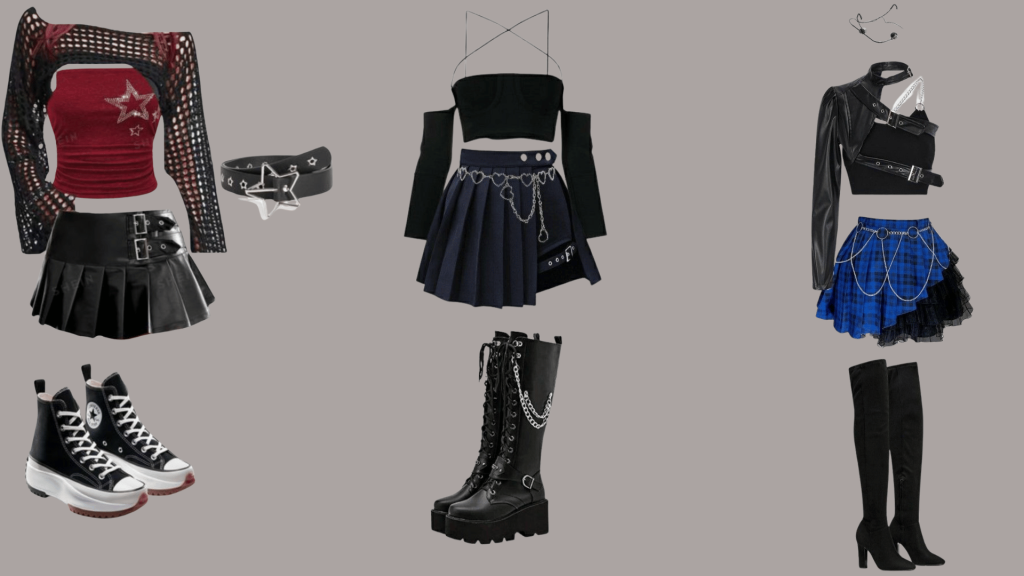
Avant-garde is characterized by boldness and experimentation and is often showcased in high fashion. It pushes boundaries with unusual shapes and unexpected designs. This style is artistic and makes a dramatic statement.
- Defining Features: Experimental, artistic, and dramatic
- Key Pieces: Sculptural dresses, asymmetrical coats, unusual fabrics
- Silhouette and Fit: Exaggerated, unconventional, and abstract
38. Eclectic Style
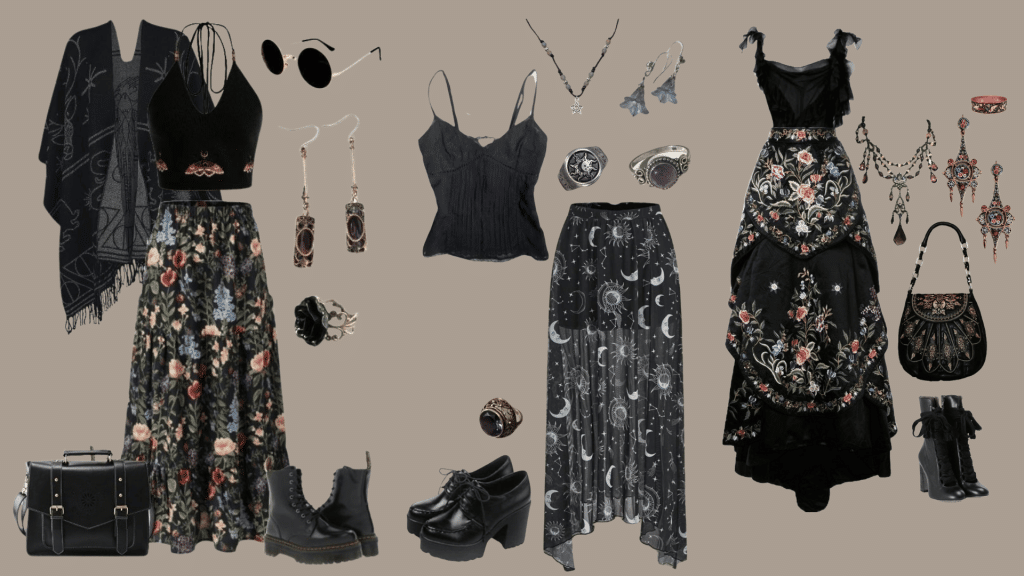
Eclectic style combines various influences into a single outfit. It thrives on contrast, combining patterns, colors, and textures in surprising ways. This style is all about personality and uniqueness.
- Defining Features: Mixed, unexpected, and individual
- Key Pieces: Patterned skirts, bold jackets, layered accessories
- Silhouette and Fit: Varies—balanced through creative layering
39. Jersey Style
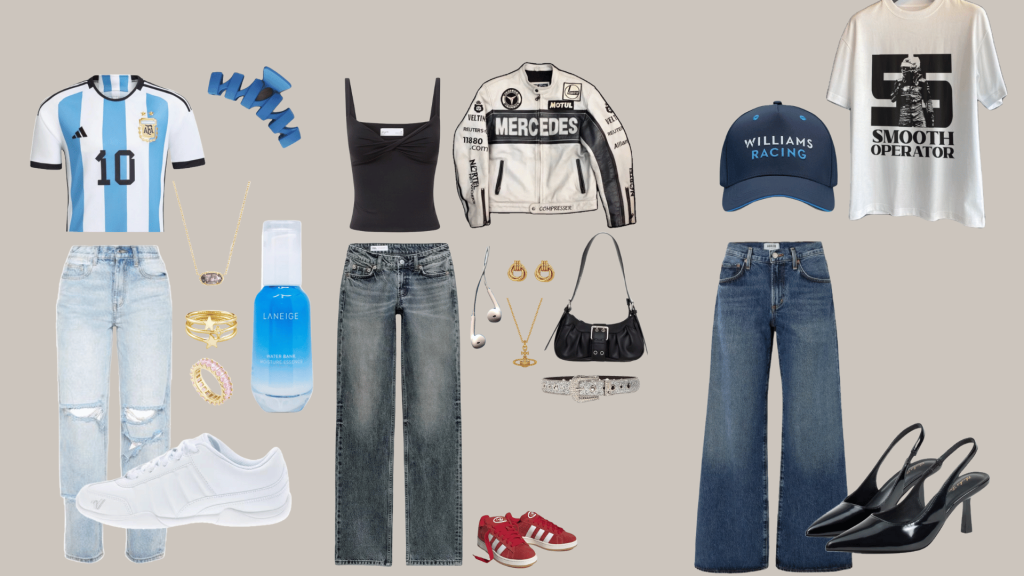
Sportswear is inspired by athletic uniforms and gear, but it’s not always meant for working out. It blends sporty looks with casual wear, giving a dynamic, active vibe.
This style bridges the gap between performance and street fashion.
- Defining Features: Athletic-inspired, casual, and stylish.
- Key Pieces: Jerseys, race track jackets, shorts, sneakers.
- Silhouette and Fit: Relaxed or semi-fitted with sporty cuts
40. Country Style
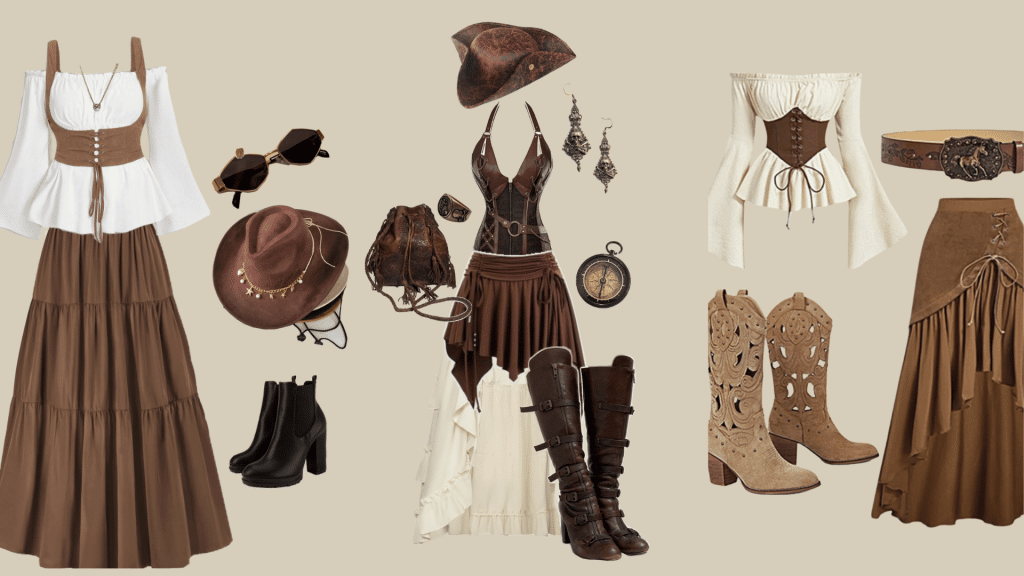
Country style reflects rural life with a warm, approachable feel. It is casual, simple, and often tied to music and outdoor living. This look combines comfort with rustic charm.
- Defining Features: Relaxed, earthy, and homegrown
- Key Pieces: Denim shorts, plaid shirts, cowboy boots, and belts
- Silhouette and Fit: Relaxed with a natural, easy shape
41. Military Style
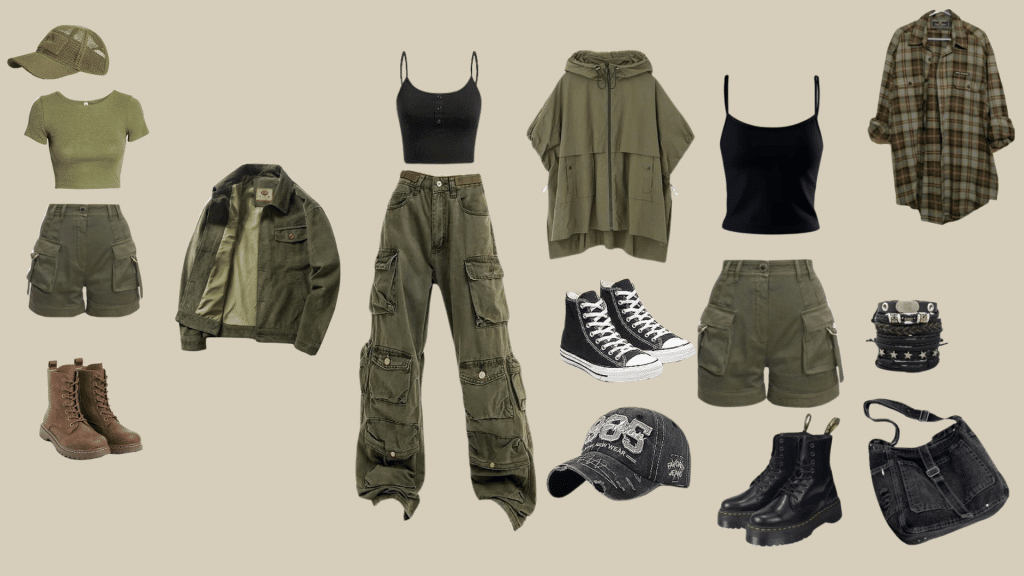
Military fashion borrows from uniforms and combat gear. It is structured, functional, and often uses camouflage or khaki tones. This style emphasizes discipline and toughness.
- Defining Features: Uniform-inspired and structured
- Key Pieces: Cargo pants, army jackets, combat boots
- Silhouette and Fit: Sharp, straight, and durable
42. Safari Style
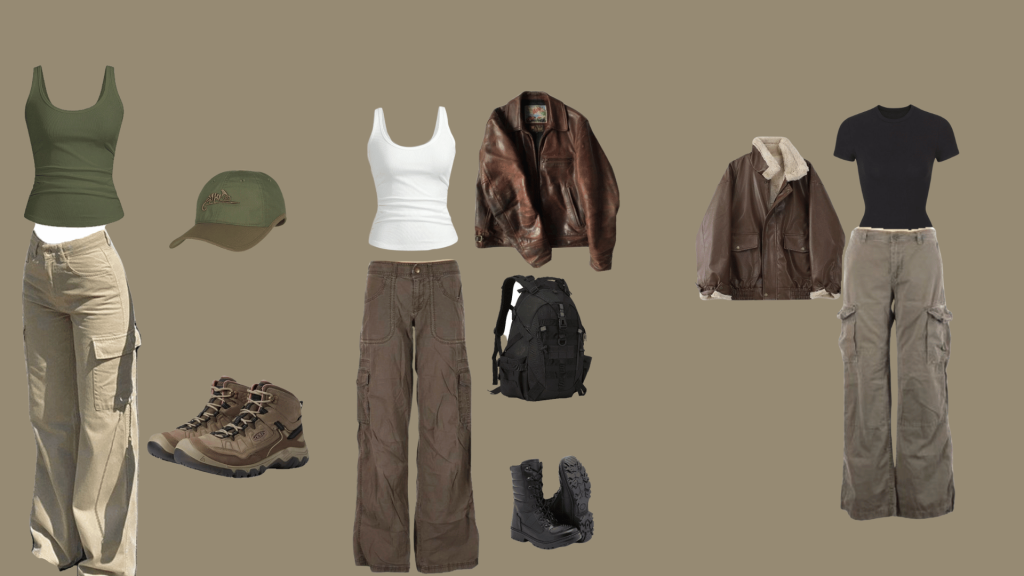
Safari style comes from travel and adventure wear. It blends practicality with style, making it both functional and stylish. Earth tones and lightweight fabrics are key.
- Defining Features: Utility-focused yet polished
- Key Pieces: Khaki shorts, buttoned shirts, cargo vests, wide hats
- Silhouette and Fit: Relaxed and breathable with structure
43. Nautical Style
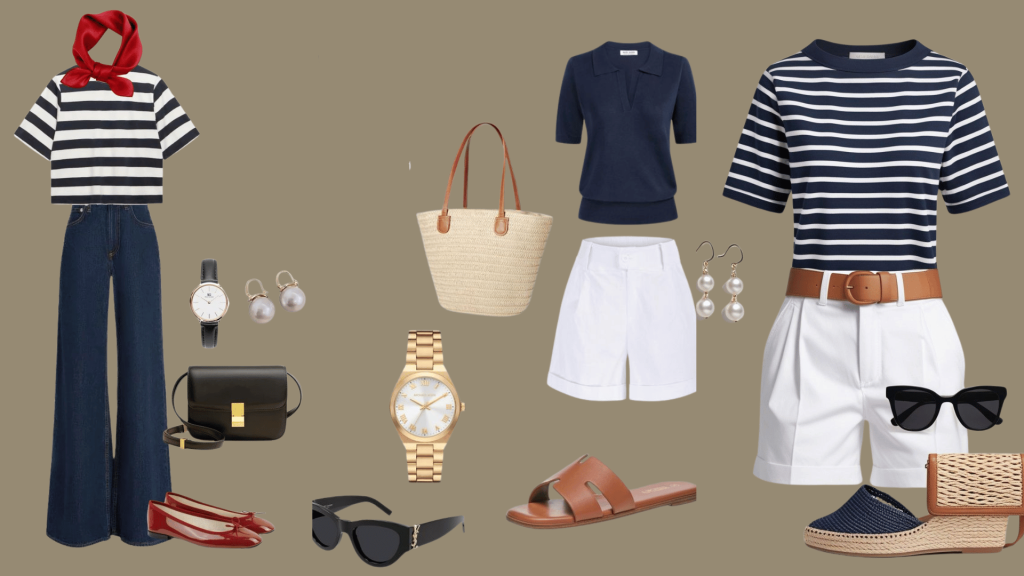
Nautical fashion is inspired by sailors and the sea. It uses a clean color palette of navy, white, and red. This style feels crisp, summery, and evergreen.
- Defining Features: Sea-inspired and classic
- Key Pieces: Striped tops, boat shoes, white pants, blazers
- Silhouette and Fit: Neat, straight, and semi-fitted
44. Parisian Chic Style
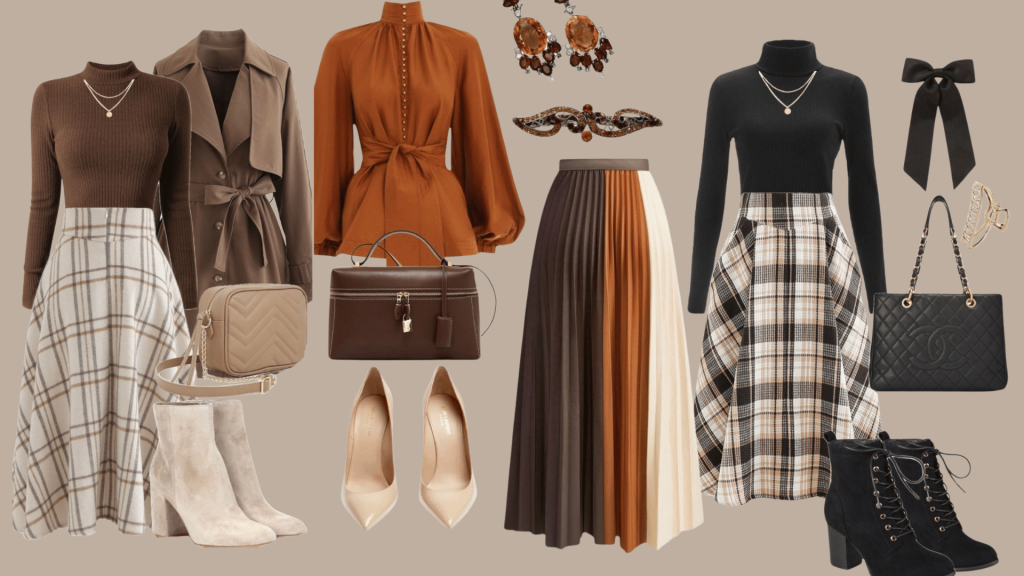
Parisian chic is effortless and polished, focusing on quality over quantity with carefully structured wardrobe pieces.
It balances simplicity with understated style, creating looks that appear naturally put-together rather than overthought.
The style achieves maximum impact through minimal effort, looking stylish without appearing overly done or trying too hard.
- Defining Features: Understated, evergreen, and Stylish
- Key Pieces: Blazers, tailored trousers, silk scarves, ballet flats
- Silhouette and Fit: Streamlined and subtly tailored
45. Italian Style
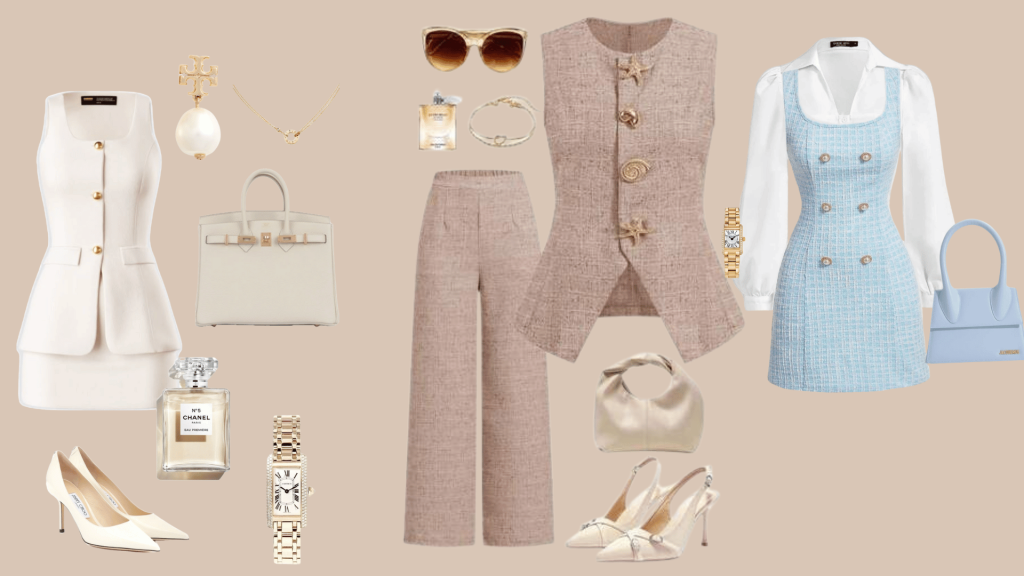
Italian style emphasizes luxury and refinement. It values high-quality fabrics and perfect tailoring. This style shows sophistication with a touch of flair.
- Defining Features: refined, sleek, and luxurious
- Key Pieces: Designer suits, leather shoes, silk dresses
- Silhouette and Fit: Sharp, fitted, and body-conscious
46. K-Fashion Style
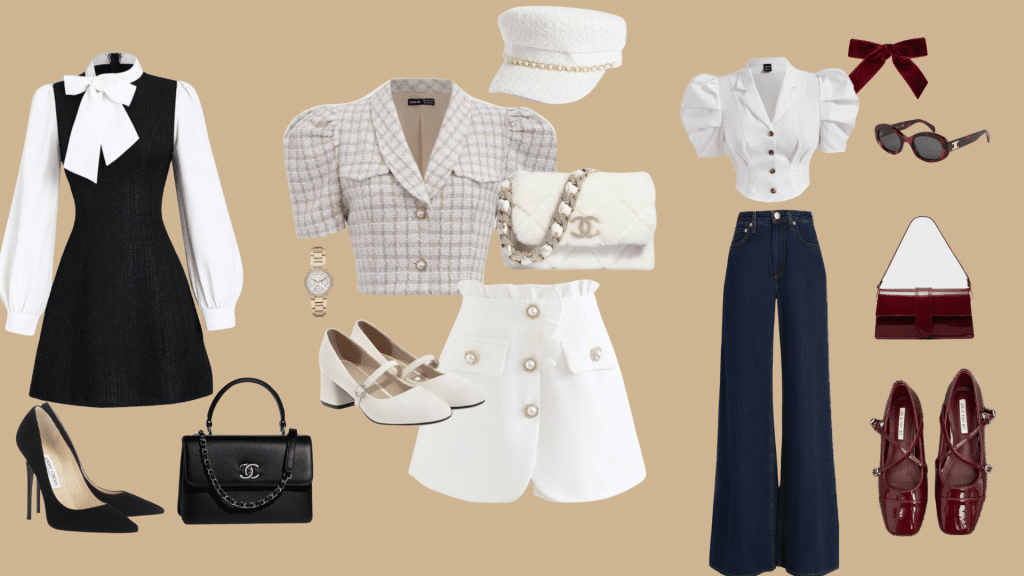
Korean fashion (K-fashion) is trendy, youthful, and experimental. It blends streetwear with modern tailoring, often layered with a touch of creativity. This style is highly influenced by K-pop culture.
- Defining Features: Playful, modern, and innovative
- Key Pieces: Oversized sweaters, pleated skirts, chunky sneakers
- Silhouette and Fit: Loose layers with fitted accents
47. Harajuku Style
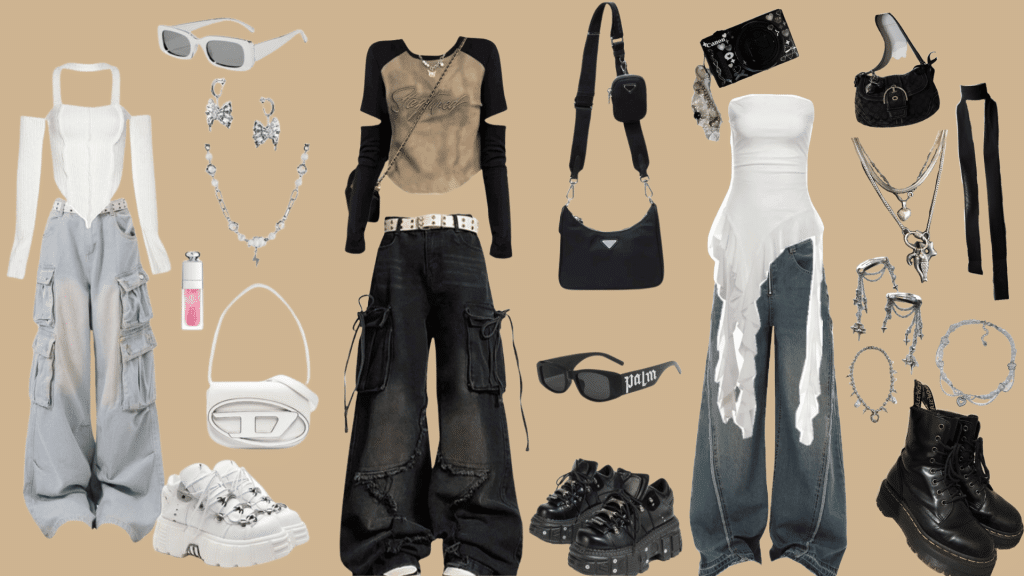
Harajuku style comes from Japan’s street fashion scene. It is bold, colorful, and eclectic, often blending multiple trends in a single outfit. The look celebrates individuality and fun.
- Defining Features: Eccentric, vibrant, and expressive
- Key Pieces: Bright accessories, layered skirts, graphic tees, wigs
- Silhouette and Fit: Mixed and exaggerated with playful shapes
48. Athleisure Style
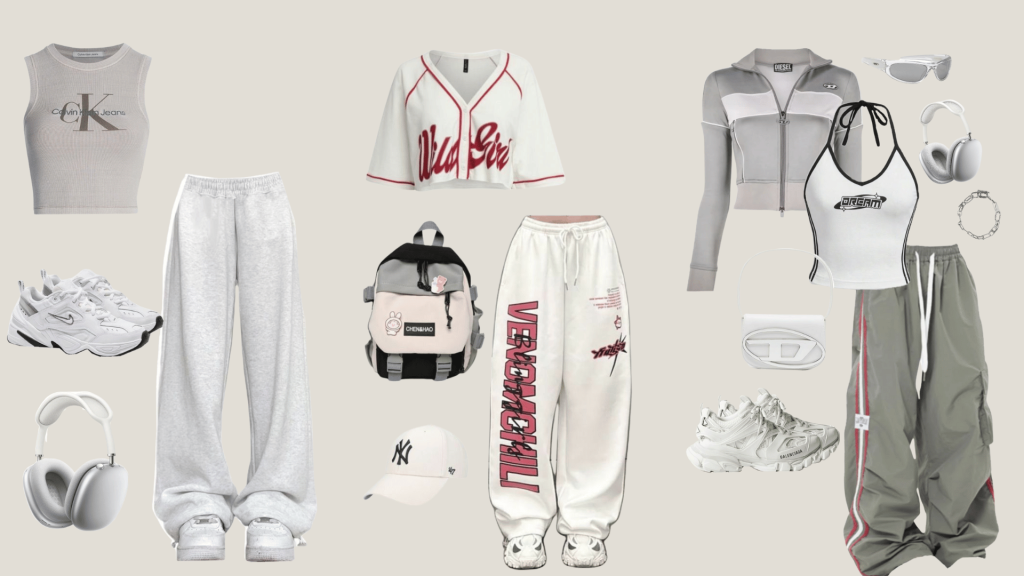
Athleisure combines athletic wear with casual fashion. It is sporty, stylish, and comfortable, designed to transition seamlessly from the gym to the street. This style is highly popular in everyday wear.
- Defining Features: Sporty and casual, made for comfort
- Key Pieces: Leggings, hoodies, sneakers, track jackets
- Silhouette and Fit: Streamlined, fitted, and flexible
49. Sporty Style
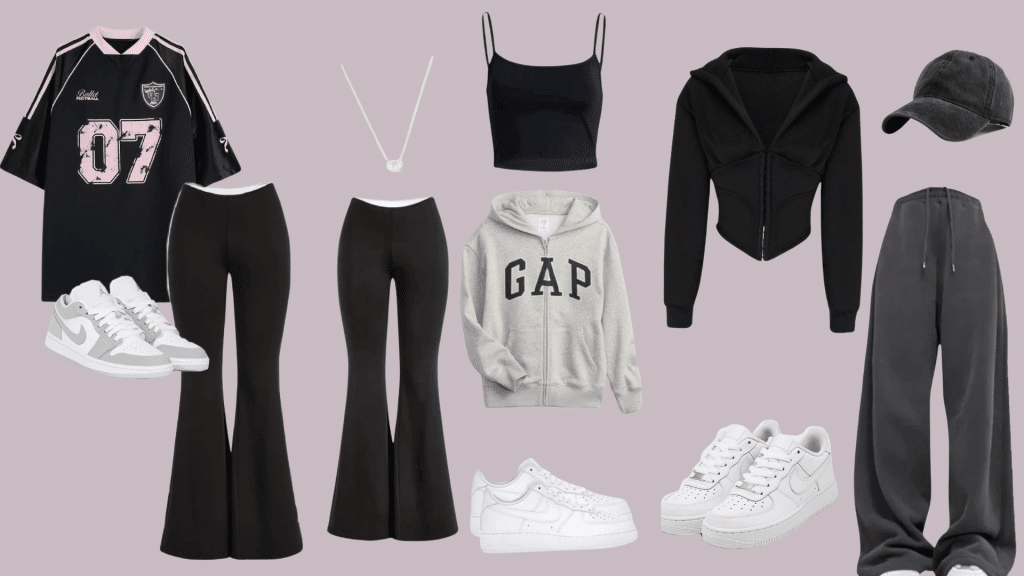
Sporty style is inspired by activewear and athletic looks. It’s practical, comfortable, and often influenced by sports teams or training gear. This style is youthful, energetic, and a diverse choice for everyday wear.
- Defining Features: Athletic, energetic, and casual
- Key Pieces: Jerseys, tracksuits, sneakers, baseball caps
- Silhouette and Fit: Relaxed with flexible movement
50. Loungewear Style
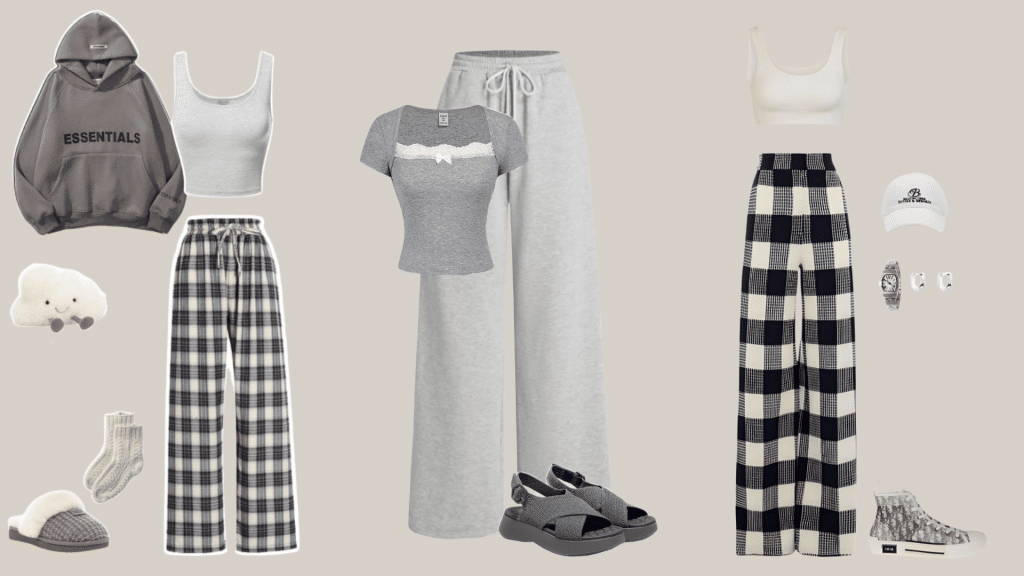
Loungewear style is built for relaxation but has become fashionable outside the home. It prioritizes comfort while still looking neat enough for errands or casual outings. Soft fabrics and simple cuts are its main focus.
- Defining Features: Cozy, simple, and comfort-driven
- Key Pieces: Joggers, oversized sweatshirts, soft knit sets
- Silhouette and Fit: Loose, relaxed, and non-restrictive
51. Sleepwear Style
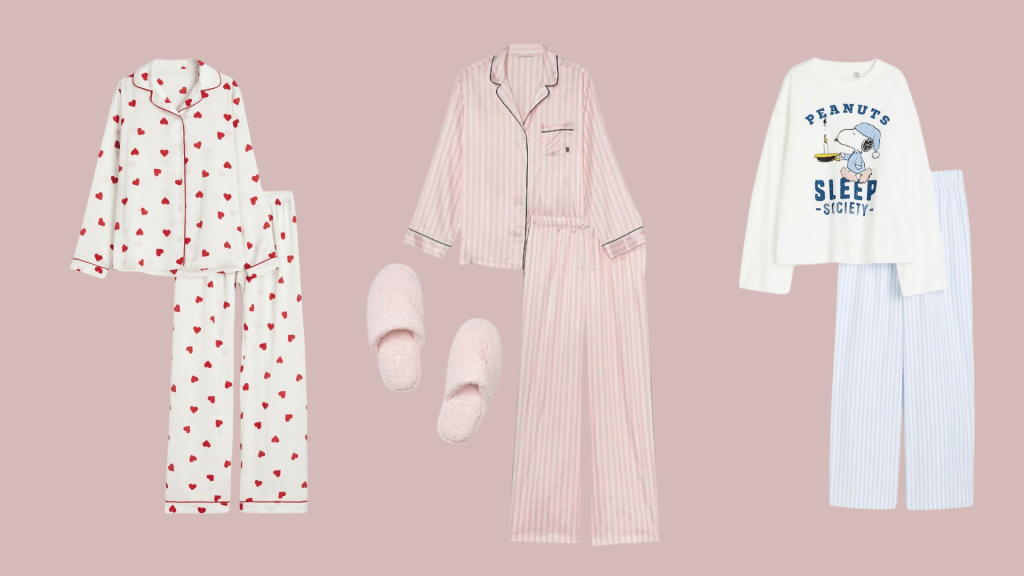
Sleepwear style borrows pieces typically meant for bedtime and adapts them for daytime wear. It turns comfort into chic by using silky, soft materials in stylish ways. The look is relaxed yet Stylish.
- Defining Features: Luxurious yet relaxed with a bedtime influence
- Key Pieces: Satin pajamas, slip dresses, robes, nightgown-inspired tops
- Silhouette and Fit: Flowing, soft, and loosely draped
52. Resort Wear Style
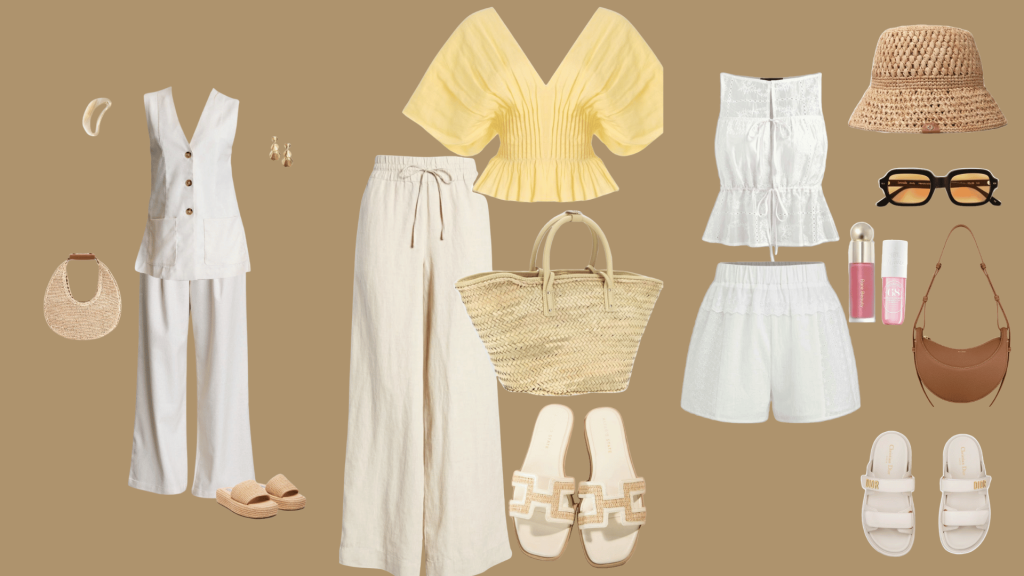
Resort wear is tied to vacation dressing, especially in warm climates. It is breezy, stylish, and effortless, perfect for beaches and holiday trips. The look is polished but relaxed.
- Defining Features: Vacation-ready, breezy, and stylish
- Key Pieces: Maxi dresses, kaftans, sandals, sun hats
- Silhouette and Fit: Flowy, lightweight, and airy
53. Swimwear Style
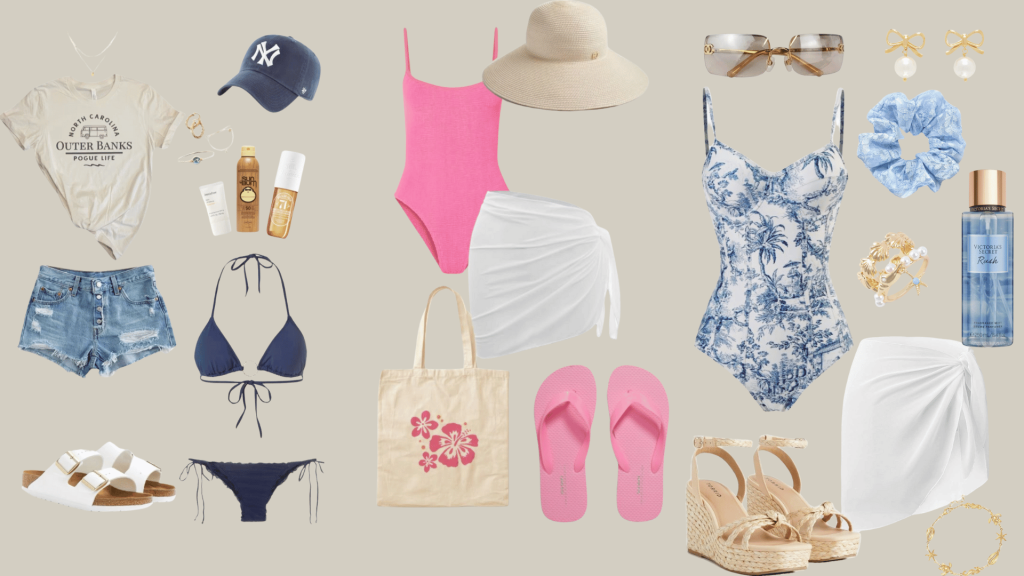
Swimwear style focuses on clothing for beaches and pools. It is bold, body-conscious, and often paired with cover-ups. This look balances practicality with statement fashion.
- Defining Features: Swim-focused, bold, and fun
- Key Pieces: Bikinis, one-piece swimsuits, sarongs, rash guards
- Silhouette and Fit: Body-hugging with light layering
Understanding these types of clothing styles shows that fashion is more than just clothing; it’s a reflection of lifestyle, culture, and individuality.
Whether someone prefers fashion styles that lean toward evergreen classics or experimental trends, knowing the range of different styles of clothing makes it easier to build a wardrobe that feels original and confident.
Tips for Finding Your Personal Style
Finding one’s perfect types of clothing styles and fashion styles requires self-reflection and experimentation. Being aware of different clothing styles helps create a wardrobe that truly represents an individual’s personality.
Key Strategies Include:
- Analyze lifestyle needs: Consider daily activities and dress codes
- Study inspiration sources: Browse magazines, social media, and street style
- Experiment with different pieces: Try new colors, patterns, and silhouettes
- Assess comfort levels: Choose styles that feel natural and confident
- Build gradually: Start with basic pieces and add personality through accessories
Wrapping It Up
Understanding various types of clothing styles empowers individuals to make confident fashion choices that truly represent their personality.
Every person deserves to feel comfortable and original in their wardrobe.
The quest toward personal style mastery continues beyond this guide. Experimenting with new looks, staying open to change, and trusting personal instincts will lead to even greater fashion confidence.
Ready to change your wardrobe? The first step is to identify one style element that resonates most and incorporate it into the next day’s outfit.

